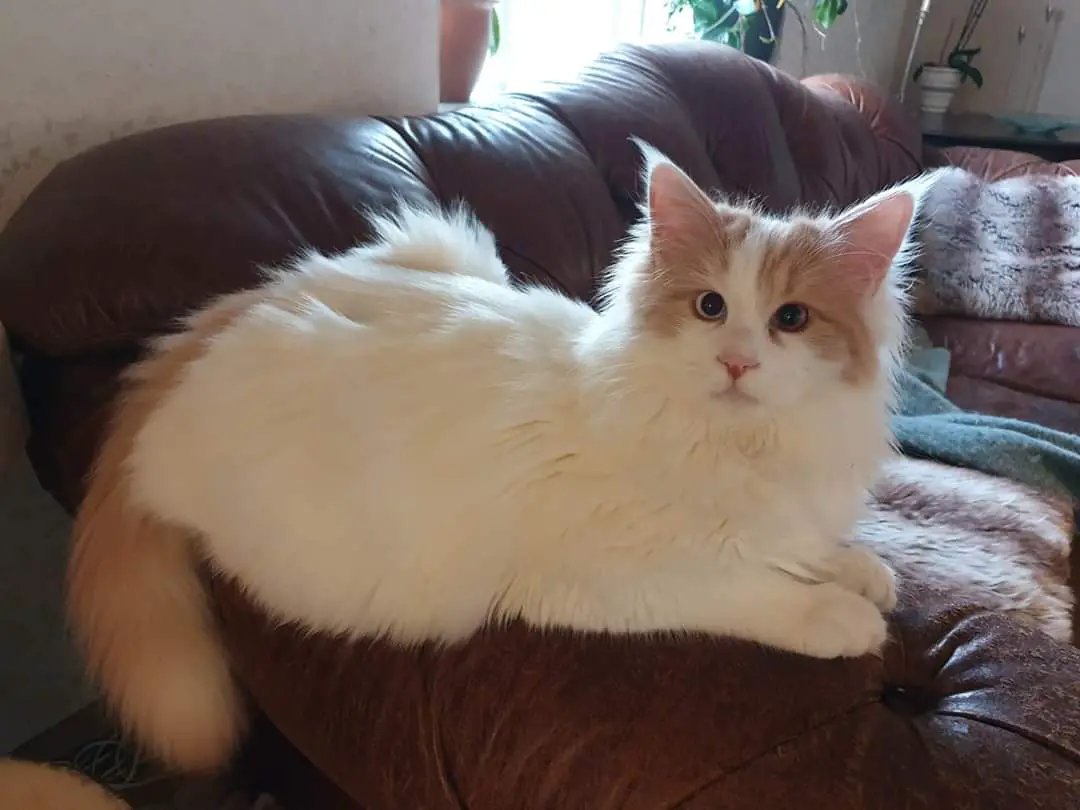The World of Purebred Cats
The Cat Fanciers’ Association (CFA) recognizes a total of 42 purebred cat breeds, while The International Cat Association (TICA) currently acknowledges 71 breeds. When selecting a breed, browsing websites and conducting research is essential. Apart from physical characteristics, different breeds exhibit variations in behavior and susceptibility to specific illnesses.
Here, we delve into the details of the 10 most common purebred cat breeds you might encounter in your everyday life. Towards the end of this article, you’ll find a table summarizing the behavioral traits and personality descriptions of cats from all 42 breeds recognized by the CFA.
10 Common Purebred Cat Breeds in Everyday Life
Discover the 10 most common purebred cat breeds that you often encounter in your daily life.
American Shorthair Cat
History: The American Shorthair cat was recognized in 1906. Initially named “Domestic Shorthair,” they arrived in North America on the Mayflower with European immigrants, serving as natural-born mousers to control ship-borne rodents. Through long-term human breeding and selection, a stable breed was developed.
Physical Characteristics: Adult males weigh approximately 5-7 kilograms, while females weigh around 3-5.5 kilograms. The American Shorthair cat continues to develop until around 3-4 years old, with a lifespan of about 15 years. They are not as “compact” as the British Shorthair. Their eyes are moderately spaced, with almond-shaped upper eyelids and a semi-circular curve on the lower eyelids. Unlike the Persian cat (see below), their eyes are not as round and are slightly upturned. They have a short nose and a robust chin, giving their face a somewhat square appearance. Their ears are of medium size, with rounded ear tips, and the distance between the tips is approximately twice the width of their eyes.
The coat of the American Shorthair cat is relatively stiff. The most classic colors are silver tabby and brown tabby.
Personality Traits: American Shorthair cats are naturally gentle, easygoing, and highly popular as family pets. They are tolerant of children and can be very calm. Female cats are often more active than males, while male cats tend to be more easygoing. Overall, they are very intelligent and curious about their surroundings. Many American Shorthairs enjoy hunting insects that invade the home and love observing birds and other creatures from the windowsill. They enjoy human companionship but also need their independent space. Some American Shorthairs like to lie on people’s laps, while others prefer to curl up nearby.

British Shorthair Cat
History: The British Shorthair cat is likely one of the oldest British cat breeds, with ancestors dating back to domestic cats from the Roman era. They were initially known for their strength and hunting abilities. Originally street cats in Britain, they evolved into a stable breed through continuous selective breeding.
Physical Characteristics: If one word could describe the British Shorthair cat, it would be “sturdy.” Adult males weigh approximately 4-8 kilograms, while females weigh around 3-5.5 kilograms. The British Shorthair cat continues to develop until around 3 years old, with a lifespan of about 15 years. Their coat is short, dense, and has a plush feel. They have a round head, a relatively short nose, full cheeks, and prominent whisker pads. Their eyes are large and round.
The most classic color for the British Shorthair cat is blue, and due to its extraordinary popularity, the blue British Shorthair cat is also known as the “blue cat.”
Personality Traits: British Shorthair cats are quite common, friendly, and affectionate. They are not overly clingy but enjoy being cared for by people. They are loyal but prefer sitting beside you on the couch rather than on your lap, earning them the nickname “four-feet-on-the-ground cat.” They are relatively quiet, do not run or jump around much, and are tolerant of children and dogs. They do not like being constantly picked up.

Exotic Shorthair Cat (Garfield)
History: The Exotic Shorthair cat is actually the result of a fortunate accident. Breeders of the American Shorthair cat crossed it with the Persian cat, aiming to achieve silver fur and green eyes. However, the outcome was not as expected. Despite this, the new breed looked exceptionally cute, prompting breeders to suggest it become a new breed called “sterling” (meaning silver). They resembled Persian cats but had short, dense fur. Initially, only silver was accepted in competitions, but later, all other colors were recognized, and the breed was renamed “Exotic Shorthair.” Breeders later crossed them with different breeds such as the Maine Coon and Russian Blue to obtain Exotic Shorthair cats with various coat colors.
Physical Characteristics: The Exotic Shorthair cat is a medium-sized cat with a large, round, and flat face. Their ears are positioned lower, and their eyes are large and round. They inherit certain head defects from Persian cats, such as tear duct overflow, narrow nostrils, and dental issues. Their bodies are short, sturdy, and square-shaped, with short and thick legs and tails. The Exotic Shorthair cat has the most “rounded” body among all shorthair cat breeds. Despite the name, their fur is not very short, closer to medium length, and they shed moderately, requiring a certain level of grooming.
Personality Traits: Exotic Shorthair cats are affectionate, gentle, and share the quiet traits of Persian cats. They use irresistible eyes to capture your attention. Their shorthair ancestors make them playful. They have a soft voice and can harmoniously coexist with children and other pets. They are wary of unfamiliar people, and their affection towards humans is relatively low.
Persian Cat
History: Named after their country of origin, Persia, Persian cats have a history that archaeological studies suggest dates back over 1600 years. They were among the earliest breeds showcased at cat shows. Throughout recorded history, Persian cats have consistently been one of the most beloved cat breeds by humans. Queen Victoria, a prominent figure of the Victorian era, was said to have two blue-eyed Persian cats, contributing to the breed’s noble reputation.
Physical Characteristics: Persian cats are a medium to large-sized breed. They have a short, square-shaped body, short legs, a round head, and a short, thick tail. Their eyes are large and round, resembling coins. The ears are small with rounded tips and positioned low. They have a short, upturned nose, and there’s a distinct indentation between the nose and forehead.
Their fur is quite long, reaching up to 15 centimeters, giving them an opulent appearance. A thick ruff of fur surrounds their heads, with a short, thick neck and fur flowing like water down their bodies, almost touching the ground. Their tails resemble a thick feather duster.
Persian cat fur is prone to matting and requires regular grooming. They are also prone to tearing and need daily cleaning.
Personality Traits: Persian cats are sweet and gentle. They prefer a stable environment and enjoy being treated with gentleness. They are not very active, not inclined to play much, and are generally quiet. They communicate mainly through their large eyes. They do not demand excessive attention and can be content being alone at home, as they are somewhat timid.
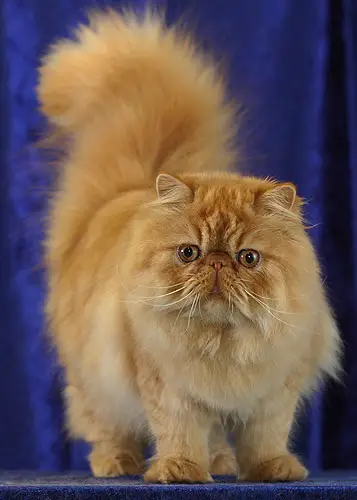
Ragdoll Cat
History: The Ragdoll cat was first bred by Ann Baker in the 1960s. The ancestors of the Ragdoll cat were mostly stray cats. Ann bred a white long-haired female cat she adopted with other cats she had taken in. The offspring of this cat had an unusually calm temperament, and when she held them, they hung on her arms loosely, much like ragdolls. After selective breeding based on coat color and other physical characteristics, she invented the Ragdoll breed.
Physical Characteristics: Ragdoll cats are large, laid-back, with medium-length fur. Adult males can weigh between 7-10 kilograms, while females can weigh between 4.5-7 kilograms. The length of the body of a male Ragdoll can exceed 1 meter (including the tail).
Ragdoll cats have enchanting, slightly upturned blue eyes. Their heads are triangular, with moderately sized ears that are spaced far apart and tilt forward. The nose is of medium length.
The Ragdoll cat is a colorpoint breed (color is concentrated on specific areas like face, legs, tail, and ears) with three varieties: colorpoint, bicolor, and mitted (with gloves – white only on the feet). Each variety comes in seal, blue, chocolate, lilac, bay, cream, red, and lynx patterns, along with additional variations of tortoiseshell, tabby, or spotted.
Ragdoll cats are considered a late-maturing breed, generally reaching full development by 3 years at the earliest, and 4-5 years at the latest.
Personality Traits: Ragdoll cats are relaxed, happy, resembling children’s toys. They are affectionate, quiet, and appear somewhat laid-back. They are not very active and not very vocal. Ragdoll cats are known for their tolerance; they can endure wearing clothes and being carried without resistance. Due to their friendliness and intelligence, they are often compared to dogs.

Scottish Fold Cat
History: In 1961, a shepherd named William Ross discovered a cat with folded ears on a farm in Scotland. He obtained a kitten named Susie from the farm owner and developed the breed known as the Scottish Fold. Almost all Scottish Fold cats today trace their ancestry back to Susie.
Physical Characteristics: The Scottish Fold cat is a medium-sized cat. Its most distinctive feature is the downward-folding ears that lie flat against the head. Scottish Fold kittens are born with straight ears, and at 3-4 weeks, there is a chance (50%) that their ears will fold. This folding feature is due to an incomplete genetic expression.
Scottish Fold cats have large, round faces and eyes, and their bodies are round in shape. They come in various colors and patterns, including traditional point colors, long-haired and short-haired varieties, and eyes of different colors, with copper being the most common.
Scottish Fold cats may have skeletal defects that can affect their mobility. They also have reduced hearing compared to regular cats and are more susceptible to ear mites.
Personality Traits: Scottish Fold cats are intelligent, curious, and loyal to their families. They are bold and enjoy following people around. Many Scottish Fold cats have the habit of standing up on their hind legs, similar to meerkats, to observe their surroundings. They get along well with children.
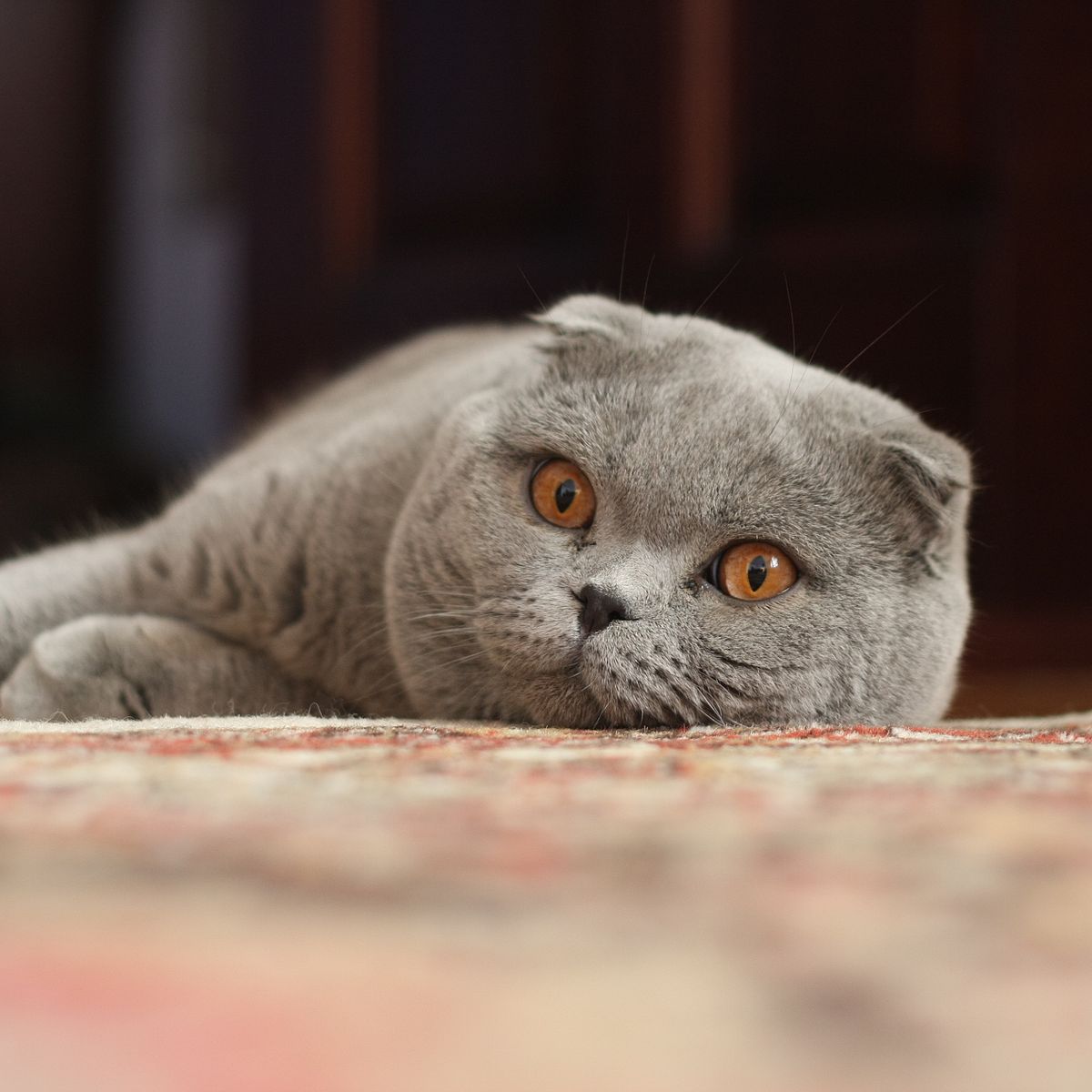
Siamese Cat
History: The earliest record of Siamese cats dates back to a manuscript from 1350, describing a cat with a white body and black face, tail, legs, and ears. Siamese cats were exported from Thailand to various parts of the world in the late 19th century, and Thailand was known as Siam at that time.
Physical Characteristics: Siamese cats have a long, tubular body, long legs, and a slender tail. Their faces are long and triangular, with large triangular ears. Siamese cats have distinctive almond-shaped eyes that are deep blue and slanting upward. They also have long, straight noses. Their short coat is shiny, smooth, and lies close to the body.
Initially, Siamese cats were only recognized in seal point color, but later blue, chocolate, and lilac colors were accepted in competitions. In the 1970s, tabby, red, and cream-spotted Siamese cats appeared. In the 1990s, silver tabby and smoke-spotted patterns emerged.
Personality Traits: Siamese cats are excellent pets for owners who seek a lot of interaction and activity. They get along well with other pets and children. They are affectionate, loyal, and people-oriented, requiring a significant amount of attention. Siamese cats enjoy playing, are very vocal, and demand a considerable amount of time and energy for their care.
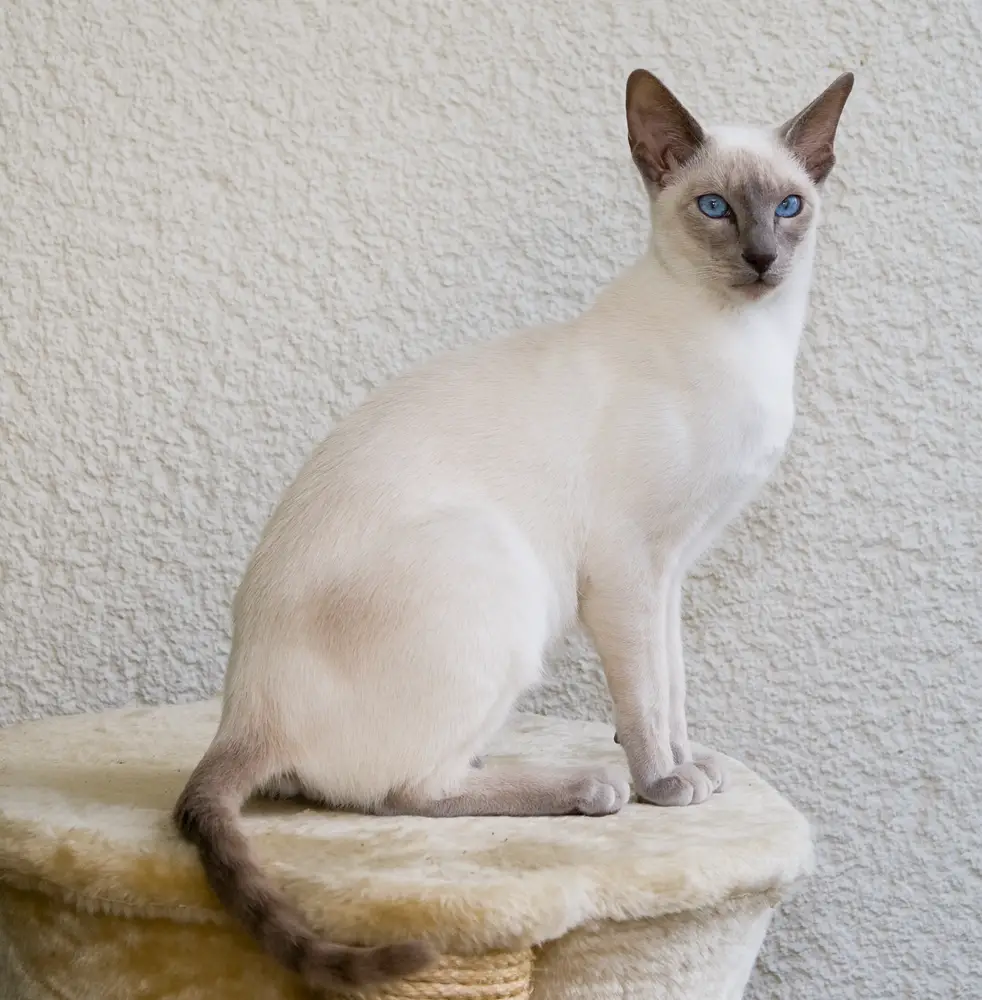
Sphynx Cat
History: Human breeding of Sphynx cats began in 1966. In Canada, a breeder discovered a kitten born without fur from a black and white cat pairing. This furless kitten was bred with other cats, establishing a new breed by cultivating the recessive gene. Due to its resemblance to the ancient Egyptian Sphinx statue, people named this cat “Sphynx Cat.”
Physical Characteristics: The Sphynx cat is one of several hairless cat breeds and has a distinctive appearance. Their skin has a texture similar to that of goat leather. A minimal amount of hair can be observed on the nose and behind the ears. They have large ears, often reaching a height of 5-8 centimeters. Their large lemon-shaped eyes and substantial belly give them a unique look, making them suitable for people allergic to cat fur. The whiskers of Sphynx cats are delicate and often prone to breakage.
While typical cats express their coat color on fur, Sphynx cats showcase theirs on their skin. Sphynx cats are susceptible to sunburn and lack the ability to resist cold temperatures. Due to whisker issues, they may face difficulties in navigating in the dark.
Personality Traits: Sphynx cats are intelligent, very gentle, and friendly. They often enjoy sleeping with their owners in bed and like to sit on their laps. Due to their lack of fur, Sphynx cats are prone to getting cold, so they prefer warm places such as near computer monitors, sunlit windows, or by the television. They are loyal and exhibit a high level of friendliness towards their owners.

Devon Rex Cat
History: The Devon Rex cat originates from the United Kingdom. In the 1960s, Beryl Cox adopted a tortoiseshell and white-striped stray cat. This cat gave birth to a litter of kittens, and among them was a male kitten with black-brown curly fur. Miss Cox kept this cat and named him Kirlee. Initially, Miss Cox believed Kirlee was a Cornish Rex cat and wrote to Brian Sterling-Webb, a cat breeding expert. However, the test results revealed that Kirlee’s curly fur gene was entirely different from the Cornish Rex gene. There were various differences in gene expression, such as the whiskers being short and coarse in Kirlee, unlike the Cornish Rex, whose whiskers are curved. Kirlee’s curly fur was dense but not wave-like as seen in the Cornish Rex. Breeders then began cultivating this new breed and named it the Devon Rex cat. All Devon Rex cats trace their ancestry back to Kirlee.
Physical Characteristics: The Devon Rex cat is of medium size, weighing around 3-4 kilograms. The short curly fur varies in appearance among cats, with some having thick, mop-like fur, others having less fur resembling goat leather, and some even having patches of baldness. Whiskers and eyelashes are short and wrinkled. Their fur doesn’t provide as much insulation as other breeds, making them feel warm when held.
Devon Rex cats have large ears and eyes, giving them an elf-like appearance. Their necks are long and slender, and their heads have a peculiar shape. It is said that E.T. was designed based on the Devon Rex cat prototype. Due to the frequent breakage of their whiskers, Devon Rex cats may have difficulty accurately judging positions and directions in the dark. Additionally, they have only a single layer of undercoat without guard hairs, making them unsuitable for outdoor living.
Personality Traits: Devon Rex cats have a mischievous appearance and personality. They are intelligent, playful, and very active, enjoying jumping and playing. They may show up in unexpected places. They are affectionate and enjoy sitting on people’s laps. Despite being relatively quiet, they can harmoniously coexist with children and other pets.

Abyssinian Cat
History: The Abyssinian cat is one of the oldest domestic cat breeds. Legend has it that Abyssinian cats are descendants of ancient Egyptian sacred cats, resembling cats depicted in ancient Egyptian murals and artifacts. However, recent studies suggest that the ancestors of Abyssinian cats may have come from Bengal.
Physical Characteristics: The Abyssinian cat is a short-haired cat of medium size with well-developed muscles. Adult males can weigh between 3.5-4.5 kilograms, while adult females can weigh between 2.7-3.2 kilograms. They have a sleek, slender body with long legs.
Their ears are large and forward-curving, sometimes resembling those of African wildcats. The head is small and slightly wedge-shaped. The almond-shaped eyes have a distinctive appearance with a ring of black eyeliner. The nose is naturally set into the overall facial contours, neither protruding nor retraced, giving them an elegant and noble look.
The fur of Abyssinian cats has a gradient color pattern resembling the coat of a wild rabbit, with each hair displaying 4-6 color bands, known as “agouti ticking” (for more details on agouti ticking, see “Cat Coat Color Guide”). The fur is highly elastic, lying close to the body and immediately returning to its original position when stroked in reverse. There is a dark line along the back extending to the tail.
Color variations include red, chocolate, ruddy, blue, lilac, and fawn. There is also a silver variety, where the fur close to the skin is icy, gradually changing color towards the tips.
Personality Traits: Abyssinian cats are loyal, affectionate, very intelligent, and love interacting with their owners and the surrounding environment. They explore all places but rarely knock things over. They have a keen interest in their surroundings. While not necessarily lap cats due to their energetic and curious nature, Abyssinian cats may lie on their owner’s legs, instantly transforming into lively, quirky postures. They enjoy the company of humans of all ages, love to play, and will try to involve their owners in their activities. They do not like being alone.
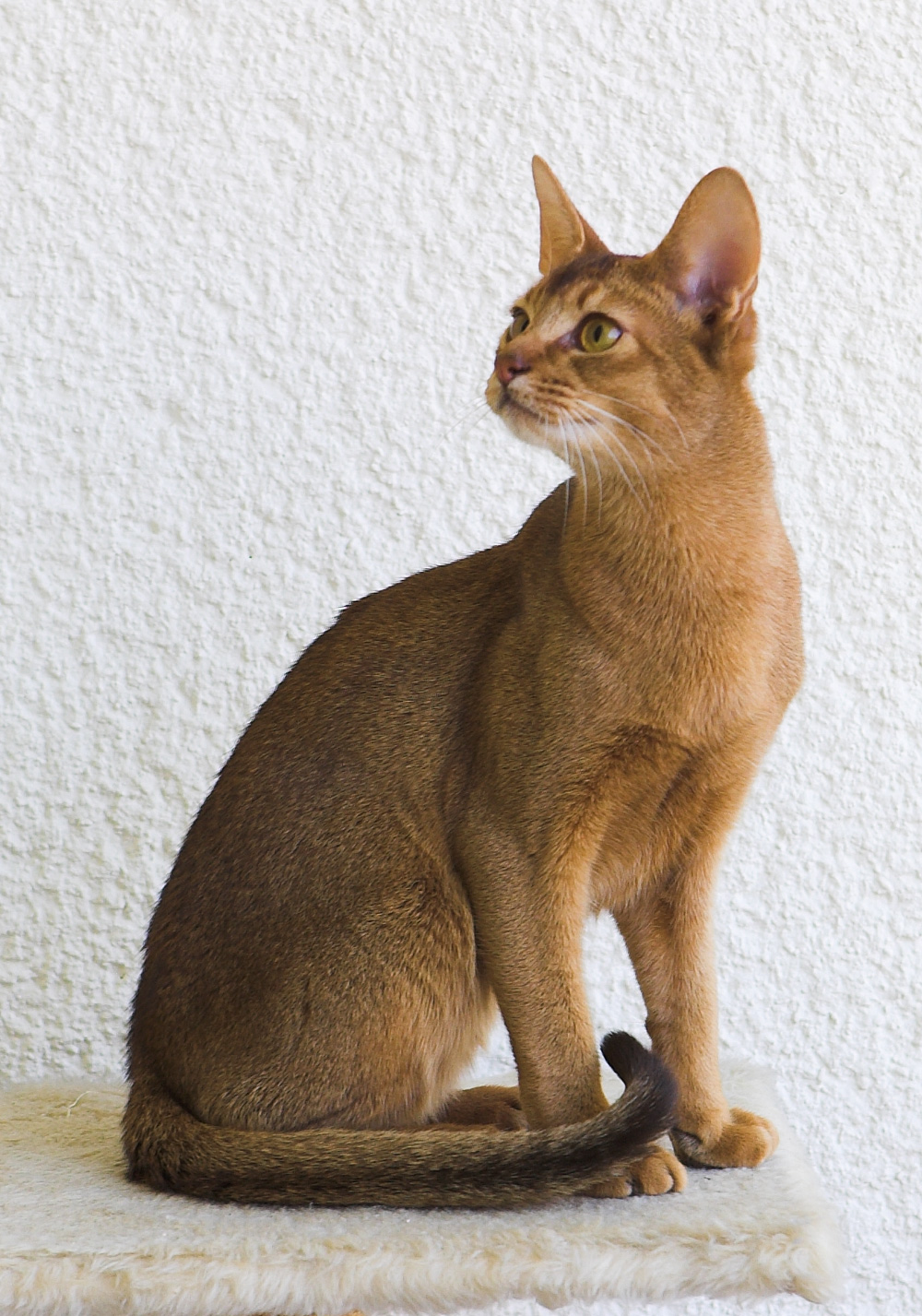
Behavioral Characteristics and Personality Descriptions of 42 CFA Recognized Purebred Cats
Introduction: The following are descriptions of the behavioral characteristics and personalities of 42 purebred cat breeds recognized by the Cat Fanciers’ Association (CFA). Each description includes information about the breed, behavior traits, personality characteristics, and key highlights. Images are sourced from: https://www.cfa.org.
Abyssinian Cat
Description: The Abyssinian cat is loyal, affectionate, highly intelligent, and loves interacting with its owner and the surrounding environment. They explore all places but seldom knock things over. They have a strong interest in their surroundings. Although not fond of sitting on people’s laps, they are always energetic and curious. Sometimes, Abyssinian cats may lie on their owner’s legs, instantly becoming lively, displaying quirky postures, and showing determination. They enjoy the company of humans of all ages, love to play, and want to involve their owners in their activities. They are not very fond of living in a group of cats.
- Almost no need for grooming
- Enjoys social interaction
- Active and playful
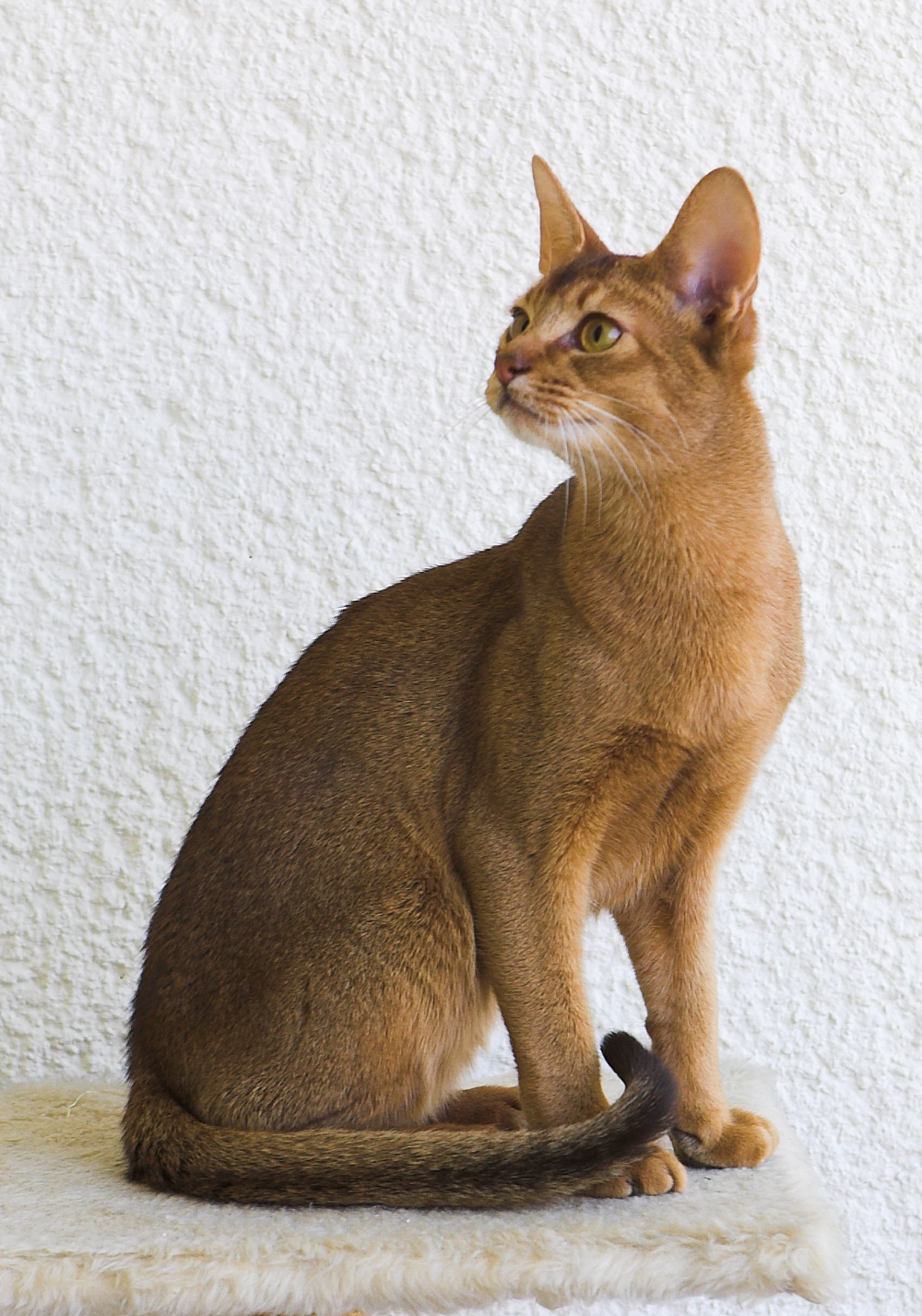
American Bobtail Cat
Description: The American Bobtail cat is a perfect family pet, forming deep connections with all family members rather than just one individual. They get along well with children and other pets, promoting harmony. Unlike being solitary, they prefer being with the family. Their love for the owner is subtle, expressed through actions rather than constant clinging. They tend to be moderately active, avoiding extremes of laziness or hyperactivity. They are relatively easy to train to walk on a leash and enjoy playing fetch.
- Requires grooming 2-3 times a week
- Enjoys social interaction
- Active and playful
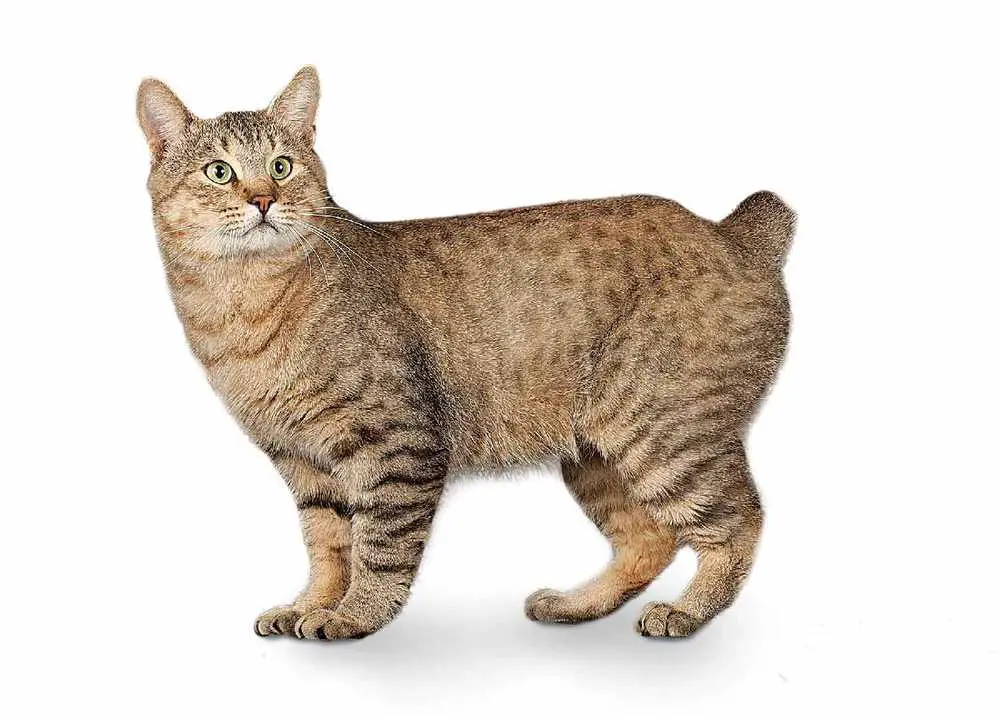
American Curl Cat
Description: The American Curl cat is curious, energetic, and loves companionship. They have ears that curl backward and toward the middle of the head. Extremely people-oriented, they may pat you to get attention and invite you to play. They prefer being with you at all times, whether it’s sleeping at night or lying on your lap while watching TV. They are fond of children and quickly adapt to other pets and new environments. Quiet by nature, they use gentle trills and purring to communicate their needs. Their kitten-like personality has earned them the nickname “Peter Pan of Cats.”
- Requires minimal grooming
- Enjoys social interaction
- Quiet
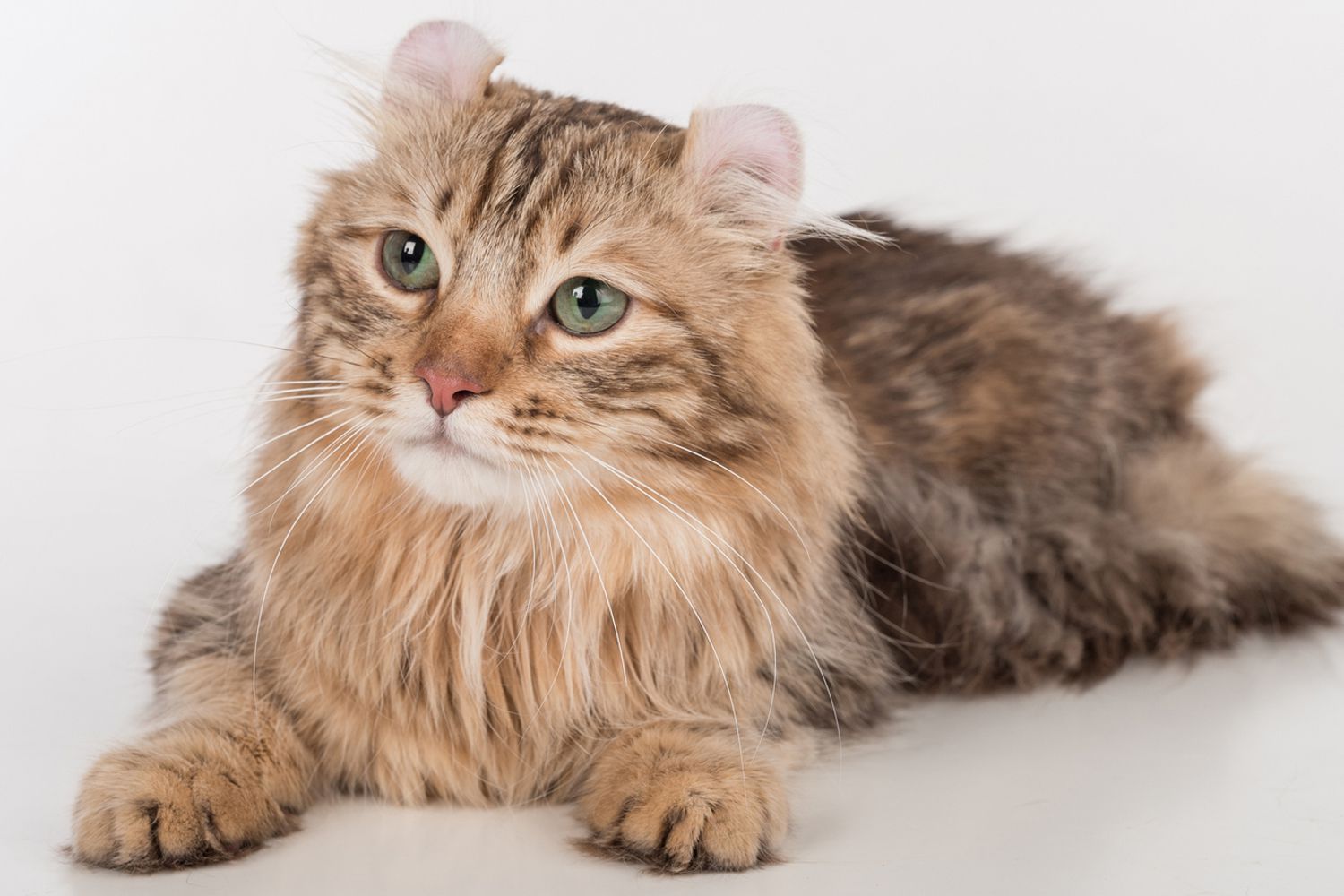
American Shorthair Cat
Description: The American Shorthair cat is inherently kind, easygoing, and a popular choice for families. They are tolerant of children. While they can be calm and composed, their playful nature often persists into old age. Female cats are typically more lively, while male cats tend to be more easygoing. Overall, they are very intelligent and curious about their surroundings. Many American Shorthairs excel at hunting and catching pesky insects. They also enjoy watching birds and other creatures from the window ledge. They love human companionship but also require their independent space. Some enjoy lounging on people’s laps, while others prefer staying nearby.
- Requires grooming 2-3 times a week
- Quiet
- Enjoys alone time

American Wirehair Cat
Description: Similar to the American Shorthair cat.
- Requires minimal grooming
- Not vocal
- Active and playful

Balinese Cat
Description: The Balinese cat has a charming personality and forms a close bond with its family. It will become your best friend and accompany you in all activities. Highly social, it loves to vocalize, actively reminding you to pay attention to potentially missed information. The Balinese cat craves attention, enjoys mischief, and shouldn’t be left alone for extended periods. It gets along well with children and other pets.
- Requires grooming 2-3 times a week
- Vocal
- Enjoys social interaction
- Active and playful

Balinese – Javanese Division
Description: Similar to the Balinese cat, the Balinese – Javanese Division shares common characteristics.
Similarities: Similar to the Balinese cat.
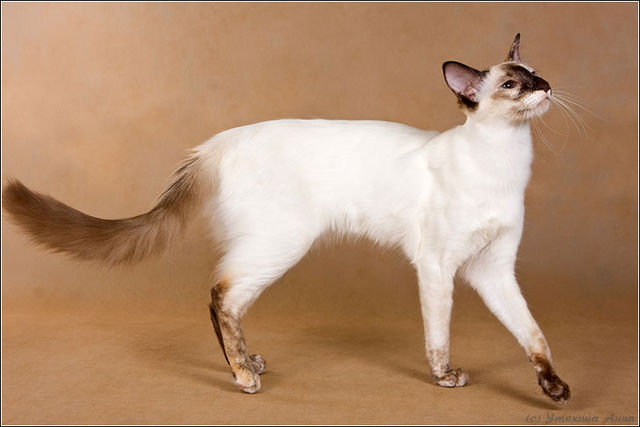
Birman
Description: The Birman cat is an ideal pet for families, adapting well to both single-cat and multi-cat households. They are patient, good-natured, tolerant, and somewhat introverted. Birmans are generally quiet, with gentle vocalizations.
- Grooming: Daily brushing is recommended.
- Temperament: Quiet
- Prefer: Enjoy solitude
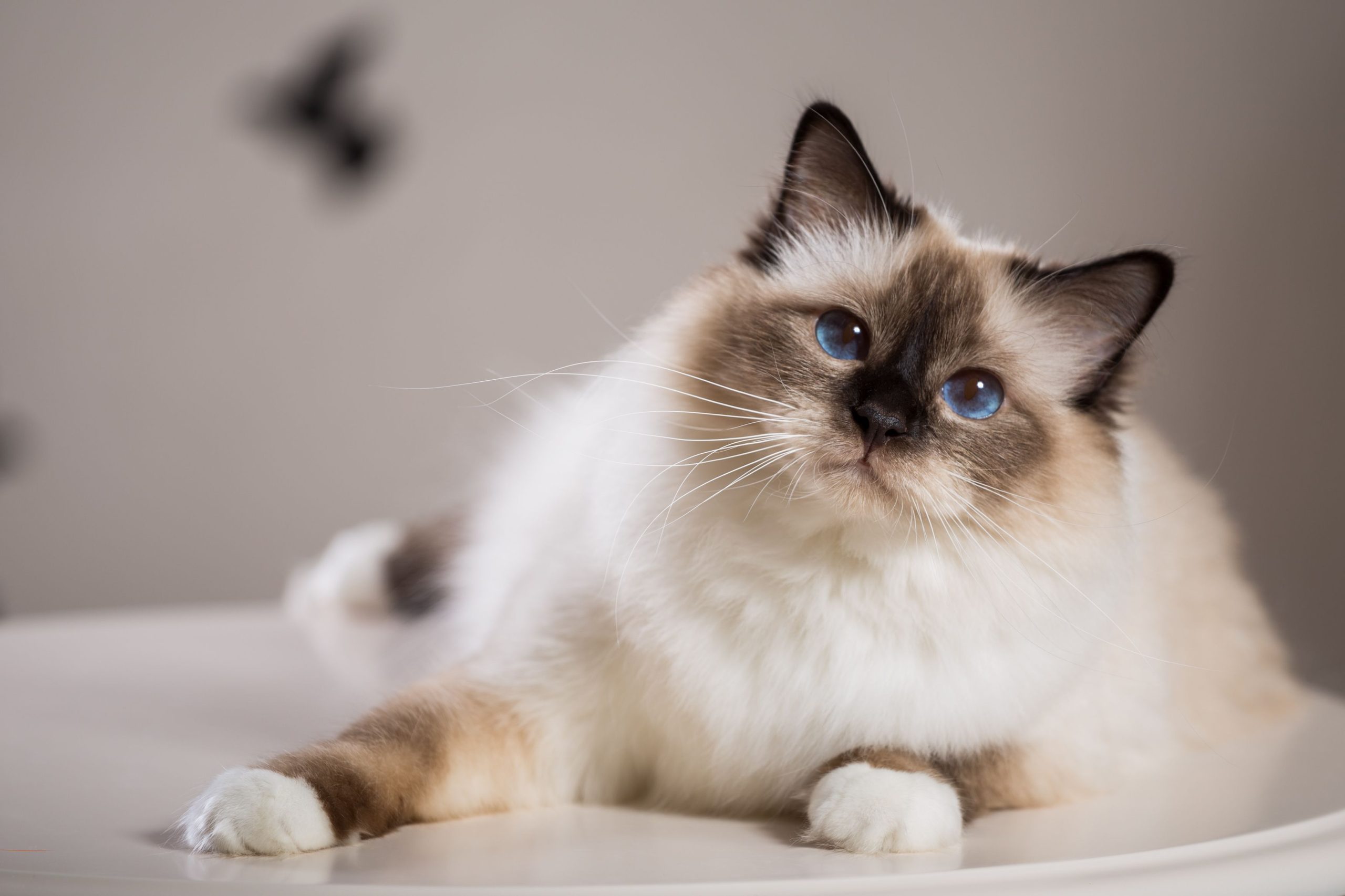
Bombay
Description: The Bombay cat combines the easygoing nature of the American Shorthair with the curiosity and friendliness of the Maine Coon. They enjoy human companionship, are generally friendly towards strangers, and bond well with the entire family, including children. Bombays may become distressed if left alone for extended periods.
- Grooming: Minimal grooming required.
- Temperament: Sociable and playful
- Activity: Energetic and loves to play
British Shorthair
Description: The British Shorthair is a common breed known for its friendly and affectionate nature. While not overly clingy, they do enjoy care and attention from humans. They are loyal but prefer to snuggle on the sofa rather than in your lap. Generally quiet and not prone to running or jumping, they tolerate children and dogs. They are not fond of being constantly picked up.
- Grooming: Requires grooming 2-3 times a week.
- Temperament: Reserved and quiet
- Activity: Calm and enjoys solitude
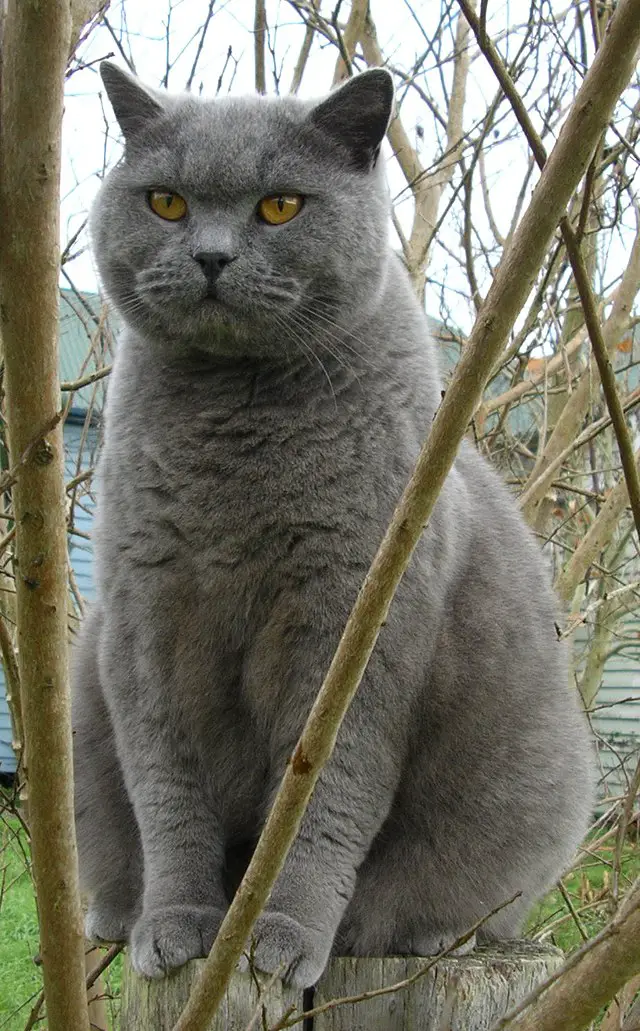
Burmese
Description: The Burmese cat is naturally sweet, affectionate, and enjoys lounging on people’s laps. They love to play and tolerate being dressed up and carried around. They are vocal and highly dependent on companionship, feeling lonely when left alone. If people have a busy work schedule and are often away, consider having two Burmese cats to keep each other company.
Burmese cats require a significant amount of exercise and are not suitable for indoor-only living.
- Grooming: Requires minimal grooming.
- Vocalization: Vocal and loves interaction.
- Activity: Energetic and playful.

Chartreux
Description: The Chartreux cat prefers staying on the ground and doesn’t enjoy being held for extended periods. They love to play, are intelligent, relatively quiet, calm, easily trainable, and form close bonds with people. They enjoy climbing and are excellent hunters.
The Chartreux cat, known for its intelligence, originates from France, and the name means “dog cat” in French. Their fur is very thick, making them well-suited to colder environments.
- Grooming: Requires grooming 2-3 times a week.
- Vocalization: Silent and reserved.
- Activity: Calm and quiet.
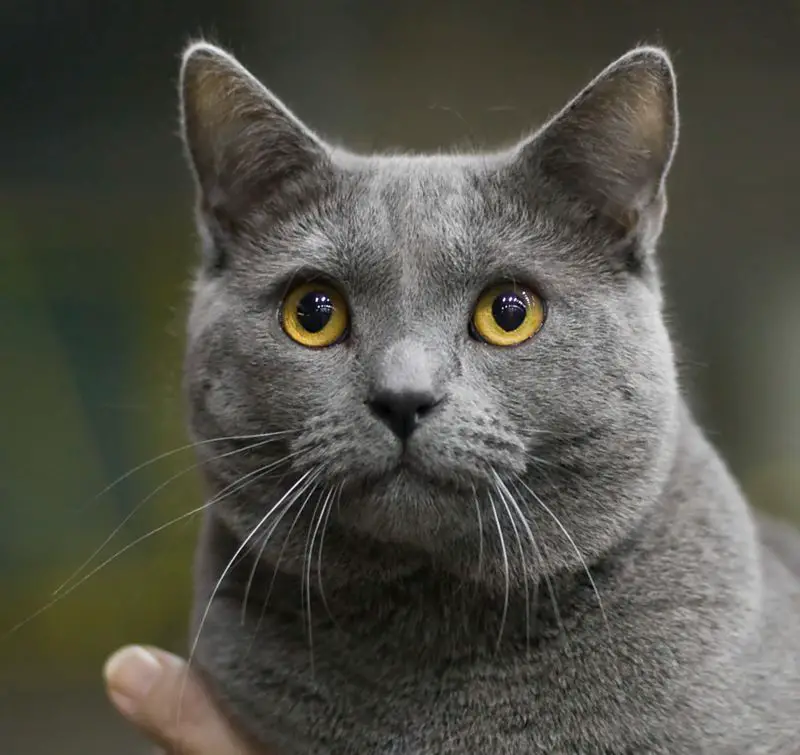
Colorpoint Shorthair
Description: Colorpoint Shorthair cats are affectionate, loyal, and very sensitive to their owner’s emotions. They enjoy sitting on people’s laps, are vocal, and can be a bit stubborn at times.
- Grooming: Requires grooming 2-3 times a week.
- Vocalization: Vocal and expressive.
- Activity: Enjoys social interaction.

Cornish Rex Cat
The Cornish Rex cat has a remarkably enthusiastic personality. It is highly sociable and enjoys being the center of attention. These cats are exceptionally intelligent, with well-coordinated bodies, and they often exhibit playful antics. Even in adulthood, they retain their mischievous nature from their youth. They are energetic, love to play, and can entertain themselves for hours.
Known for their affectionate nature, Cornish Rex cats are fond of sitting on people’s laps and can peacefully coexist with other animals and children.
- Requires minimal grooming
- Expressive vocalizations
- Enjoys social interactions
- Playful and lively
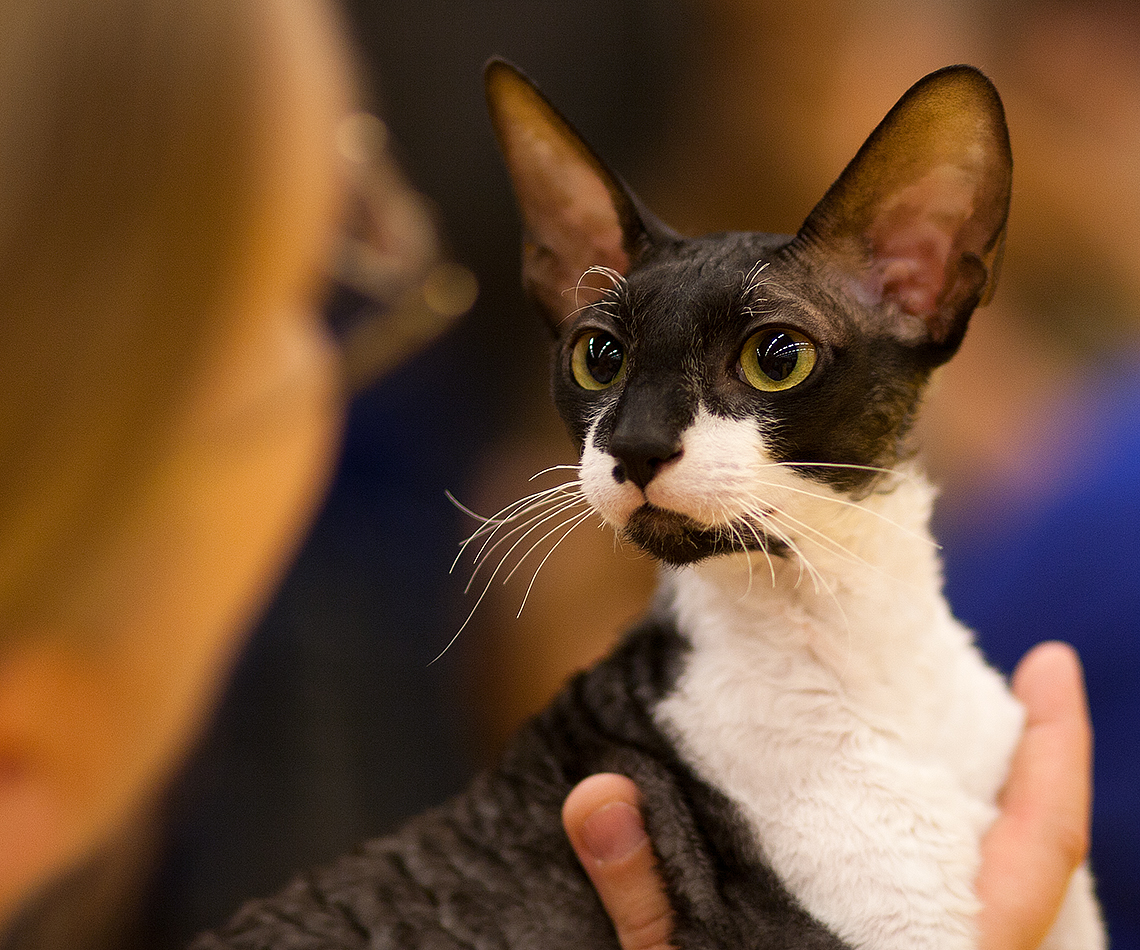
Devon Rex Cat
The Devon Rex cat possesses a quirky appearance and personality. They are intelligent, mischievous, and highly active. These cats love to play and excel in jumping. You may find them in unexpected places, showcasing their playful nature. They are affectionate and enjoy sitting on people’s laps. Despite being relatively quiet, they can harmoniously coexist with children and other pets.
- Requires minimal grooming
- Expressive vocalizations
- Enjoys social interactions
- Playful and lively

Egyptian Mau Cat
The Egyptian Mau is sometimes considered distant and shy, but with its owners, it forms a special emotional bond. These cats are exceptionally loyal. They have keen senses of smell, hearing, and vision. They are sensitive and shy, easily disturbed by sudden noises.
Belonging to one of the most agile and nimble breeds, Egyptian Maus enjoy outdoor activities.
- Requires minimal grooming
- Quiet

European Burmese Cat
The European Burmese cat is highly intelligent, affectionate, and extremely loyal. They are friendly towards people and enjoy sitting on laps. These cats love to play, have a soft voice, and can peacefully coexist with other pets.
- Requires minimal grooming
- Enjoys social interactions
- Quiet
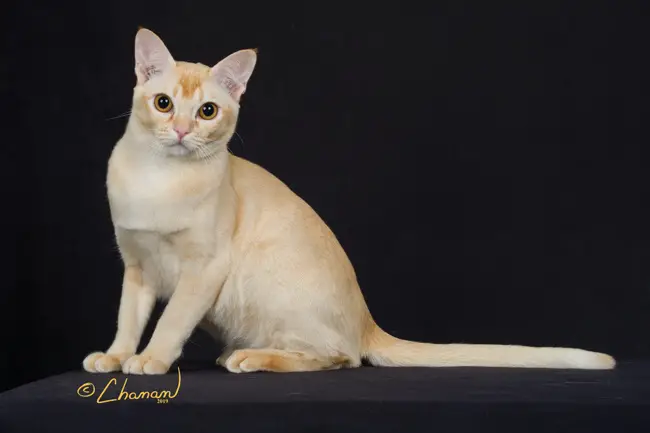
Exotic Shorthair Cat
The Exotic Shorthair cat is affectionate, gentle, and exhibits a quiet demeanor similar to Persian cats. They use irresistible eyes to capture your attention. Their short-haired ancestors instill a love for playfulness in them. With a soft voice, they can harmoniously coexist with children and other pets. They are wary of unfamiliar people, displaying a relatively low affection level towards humans.
- Requires grooming 2-3 times a week
- Daily cleaning of tear stains
- Quiet
- Enjoys solitude
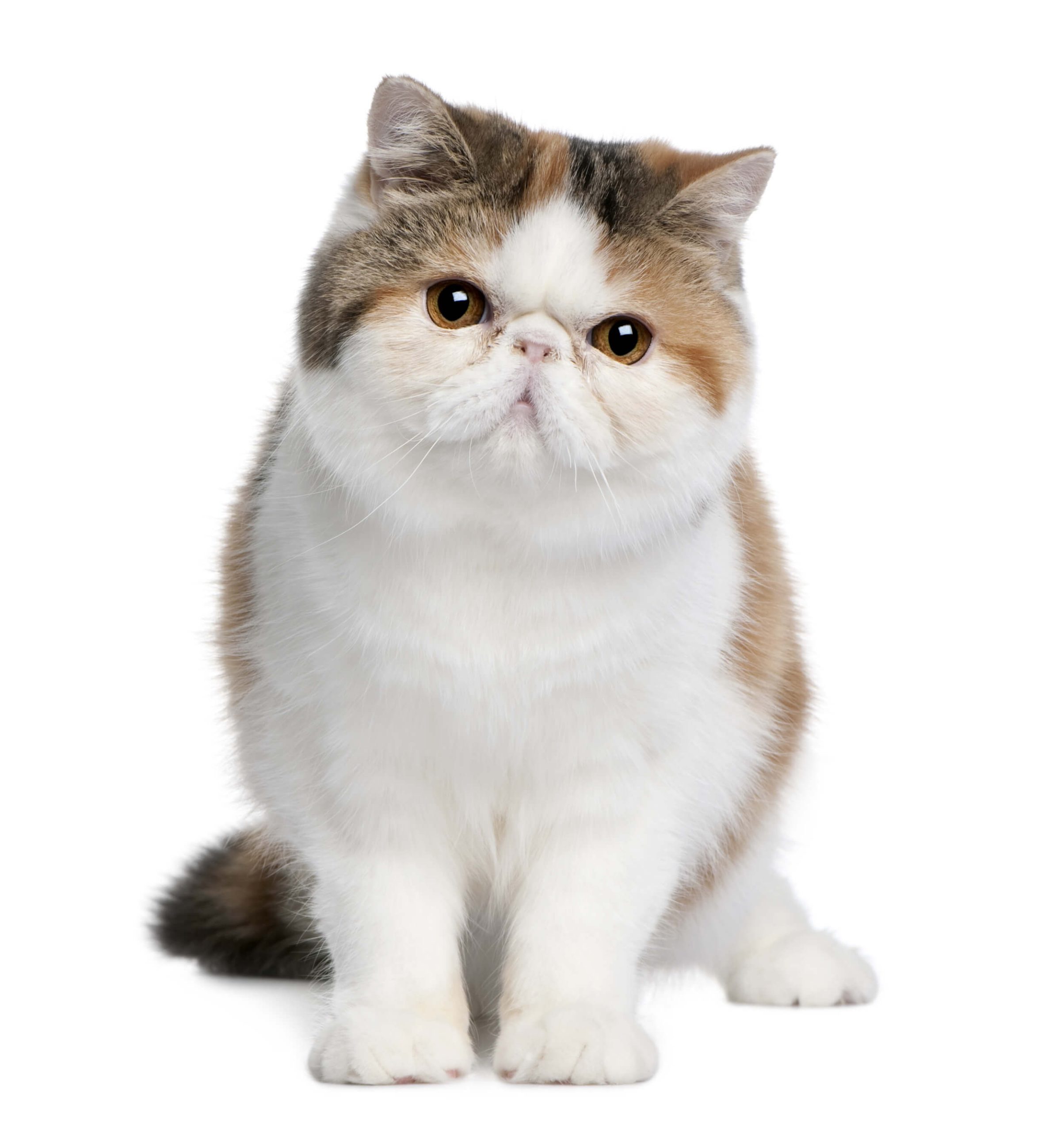
Havana Brown Cat
The Havana Brown cat is curious, playful, and affectionate. They thrive on attention and reciprocate with love. These cats enjoy exploring and may occasionally knock things over.
- Requires minimal grooming
- Enjoys social interactions
- Playful and lively
- Quiet
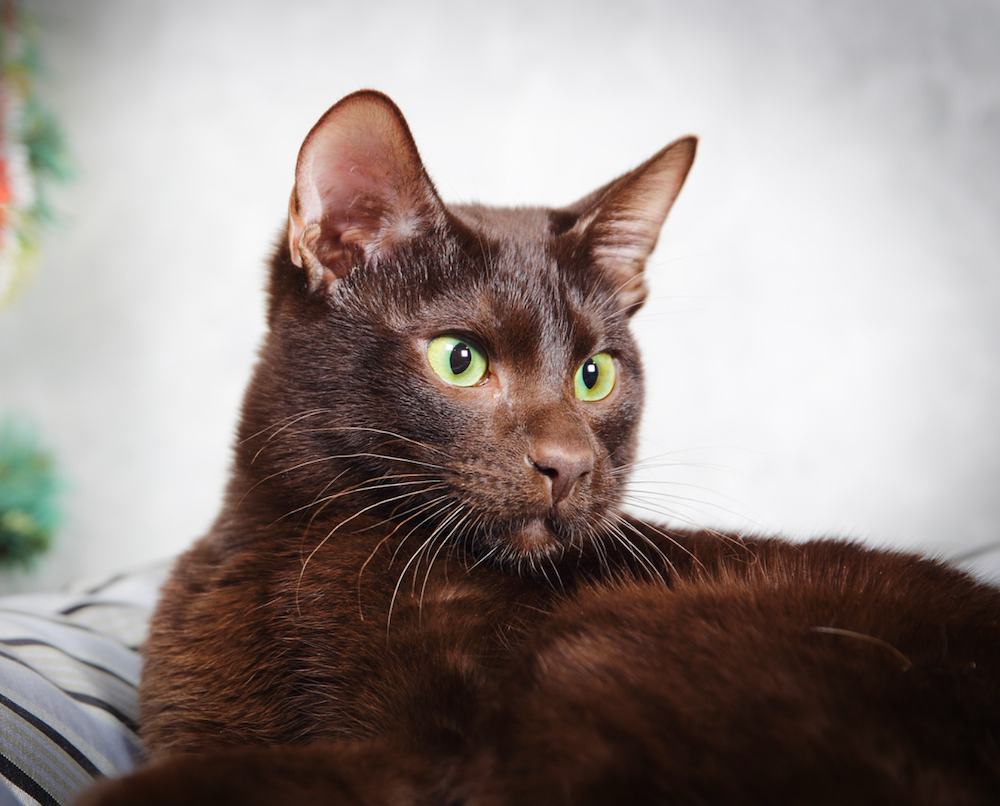
Japanese Bobtail Cat
The Japanese Bobtail cat is lively, intelligent, and enjoys the company of others. They are friendly, outgoing, and love to play, preferring not to stay on people’s laps for extended periods. These cats are loyal to their families and can adapt well to children and other pets.
- Requires minimal grooming
- Enjoys social interactions
- Playful and lively
- Expressive vocalizations
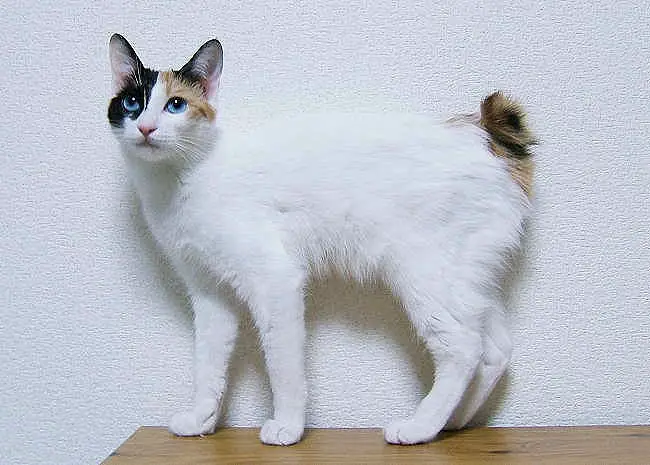
Korat Cat
The Korat cat is energetic, intelligent, and affectionate. They particularly enjoy the company of other Korat cats. They may have difficulty accepting other cats and tend to be assertive. With extremely sharp hearing, vision, and sense of smell, they move gracefully and dislike loud noises.
They have striking green eyes. In their homeland of Thailand, Korat cats are considered to bring good luck.
- Requires minimal grooming
- Enjoys social interactions
- Playful and lively

La Perm Cat
The La Perm cat is intelligent and has a strong curiosity. They are mischievous and playful, often exhibiting quirky behavior. Active and outgoing, they enjoy participating in activities with people. Their friendly nature allows them to get along well with children and other pets.
- Requires grooming 2-3 times a week
- Not vocal
- Enjoys social interactions
- Playful and lively
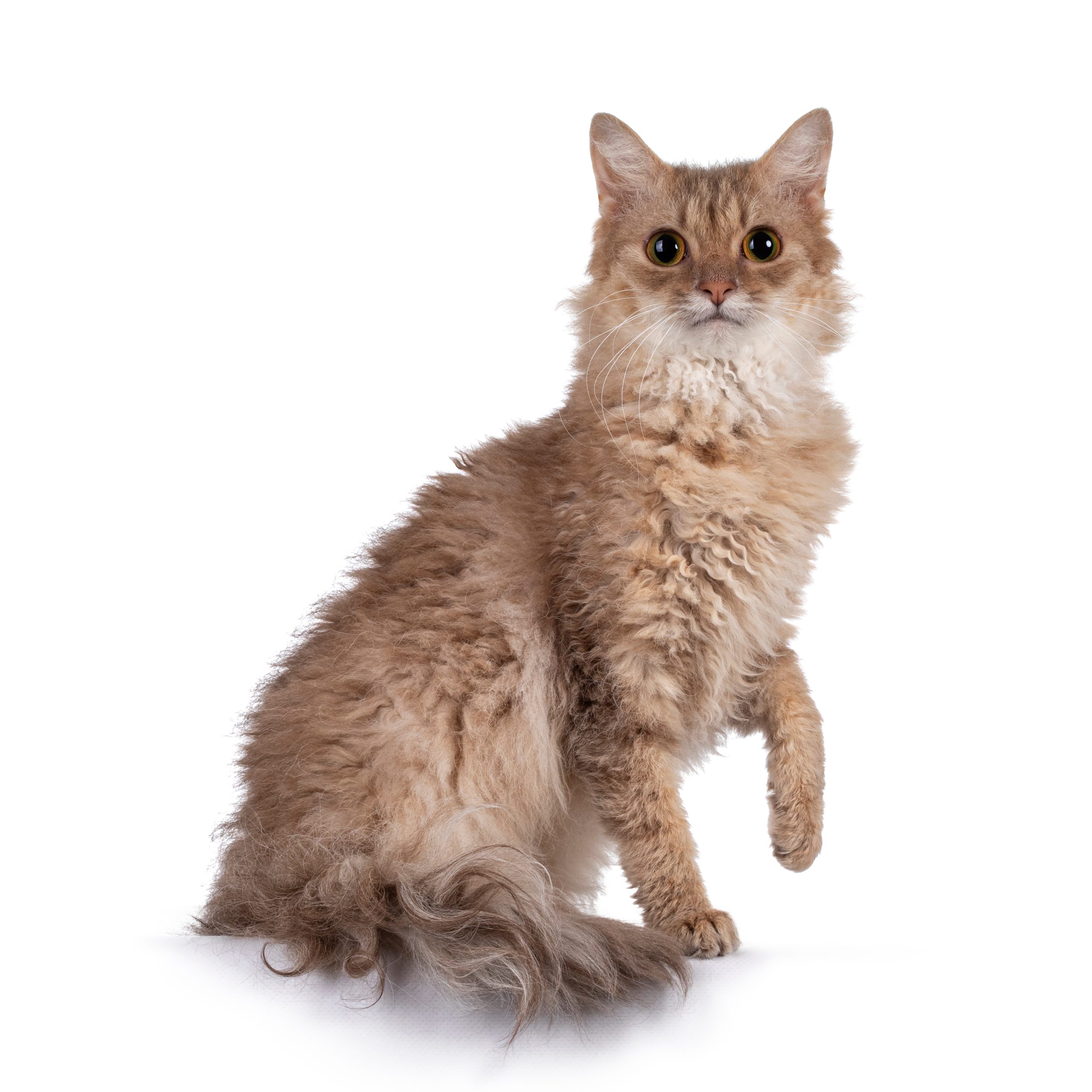
Maine Coon Cat
Although Maine Coon cats are affectionate towards humans, they are not excessively clingy. They are more like equal companions to people. Easygoing, relaxed, and vocal, they can get along with children, dogs, and other cats.
Maine Coon cats are exceptionally large and robust, with a body length that can exceed 100 centimeters (nose to tail tip) and a weight that can reach 10 kilograms. They are designated as the state cat of Maine in the United States.
- Requires grooming 2-3 times a week
- Quite vocal
- Enjoys solitude
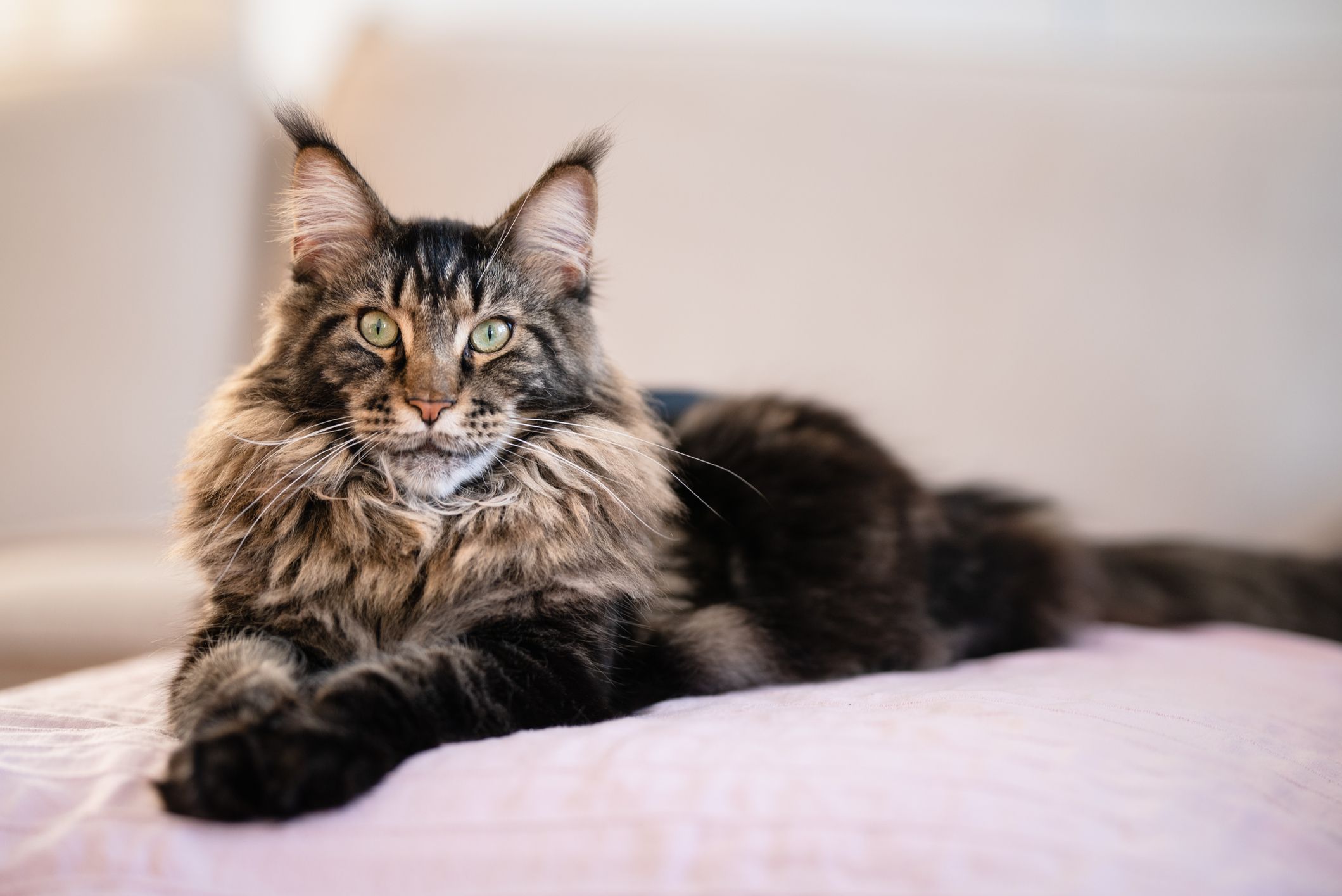
Manx Cat
The Manx cat loves to play, and its strong hind legs make it an excellent jumper. They are highly intelligent and can learn quickly. Their voices are relatively gentle, and they tend to be quiet. Forming a strong bond with the family, with proper introduction, they can peacefully coexist with children and other pets.
- Requires grooming 2-3 times a week
- Quiet
- Enjoys solitude
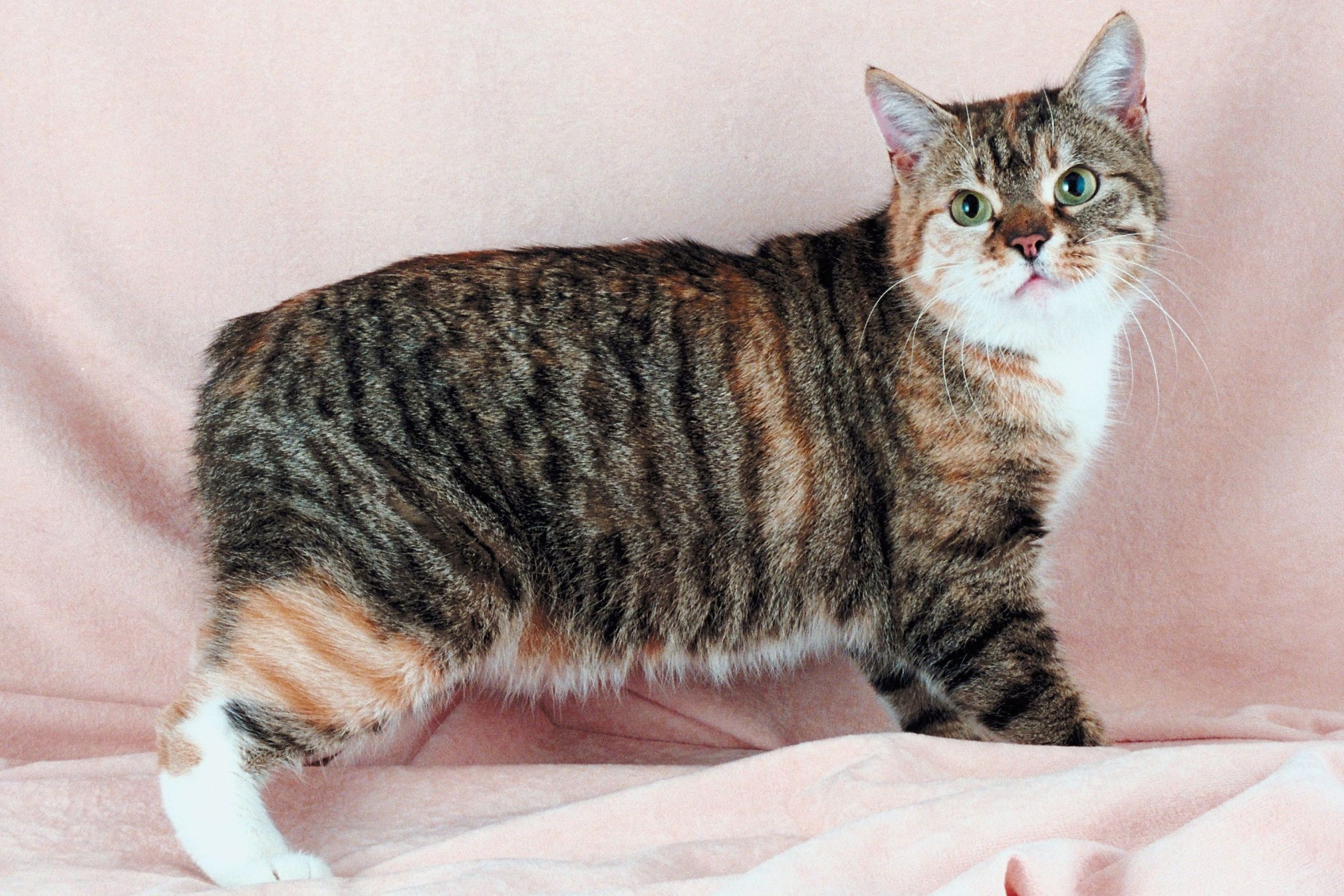
Norwegian Forest Cat
The Norwegian Forest Cat is relatively independent, taking a dominant role in interactions with humans. They are moderately active, not vocal, and sweet-natured.
Belonging to the large cat category, male cats can weigh up to nearly 10 kilograms, and their body length (nose to tail tip) can reach 1.3 meters.
- Requires grooming 2-3 times a week
- Not vocal
- Enjoys solitude

Ocicat
The Ocicat may look “wild,” but they are undoubtedly family-friendly pets. They are confident, outgoing, and unafraid of strangers. Intelligent and energetic, they have a strong desire to possess toys.
- Requires minimal grooming
- Vocal
- Enjoys social interactions
- Playful and lively
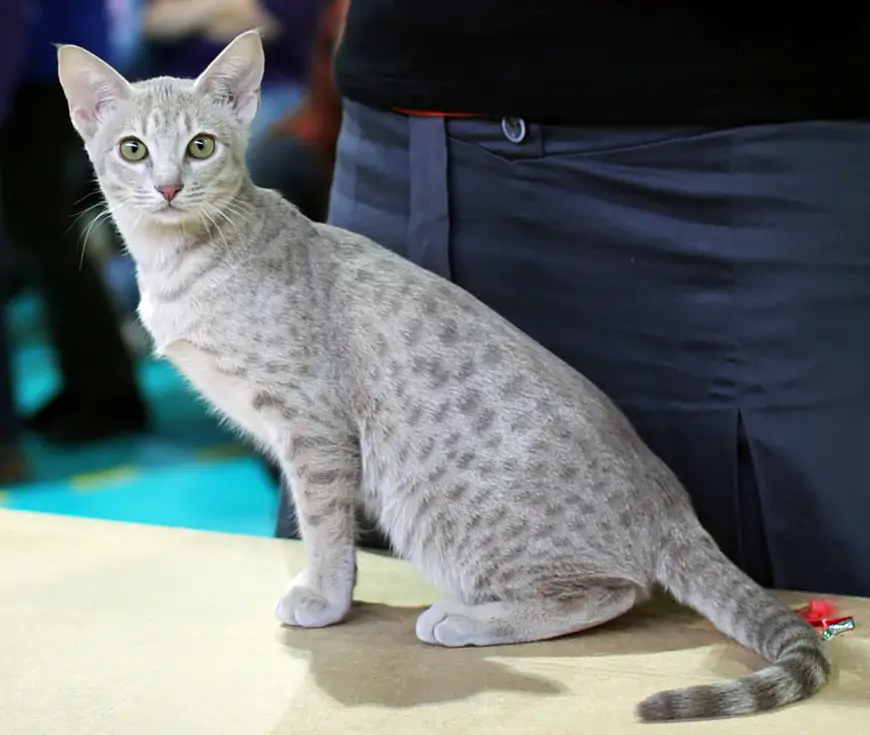
Oriental Cat
The Oriental Cat is lively, intelligent, sociable, and playful. Even in adulthood, they maintain their playful nature from their youth. They are quite vocal. Some Oriental Cats form emotional bonds with only one person and may be reserved or even unfriendly towards strangers and other members of the household.
- Requires minimal grooming
- Vocal
- Enjoys social interactions
- Playful and lively
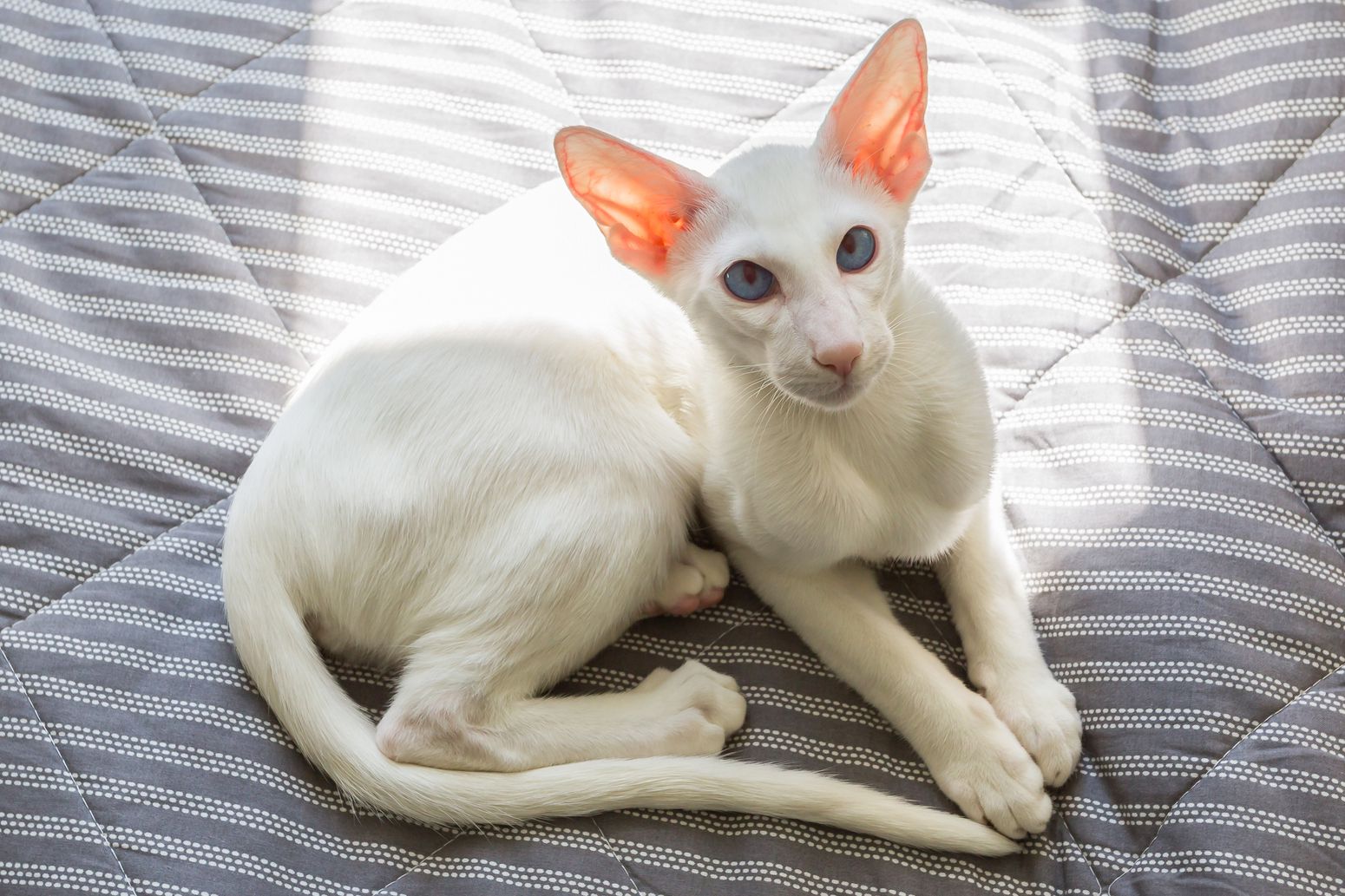
Persian Cat
The Persian Cat is sweet and gentle, preferring a calm environment and enjoying gentle treatment. They are not very active, not fond of playfulness, and are quiet, mainly communicating through their large eyes. They do not require excessive attention and can be left alone at home, but they are a bit timid.
- Requires daily grooming
- Daily cleaning of tear stains
- Quiet
- Enjoys solitude
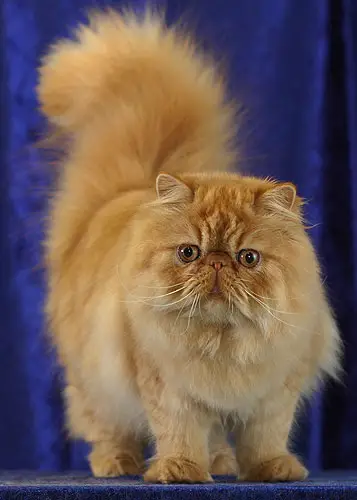
RagaMuffin Cat
Similar to the Ragdoll cat.
Similar to the Ragdoll cat.
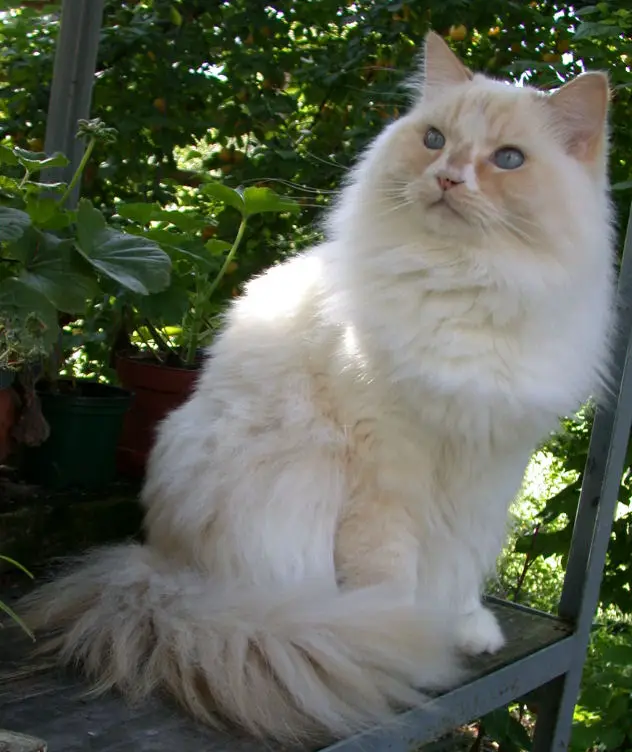
Ragdoll Cat
The Ragdoll Cat is relaxed, happy, much like a child’s toy. They are affectionate, quiet, and appear somewhat lazy. They are not very active and are not prone to vocalizing. Ragdoll Cats are known for their tolerance; they can endure wearing clothes and being carried without resistance. Due to their friendliness and intelligence, they are often compared to dogs.
- Requires grooming 2-3 times a week
- Silent type
- Quiet
- Enjoys solitude
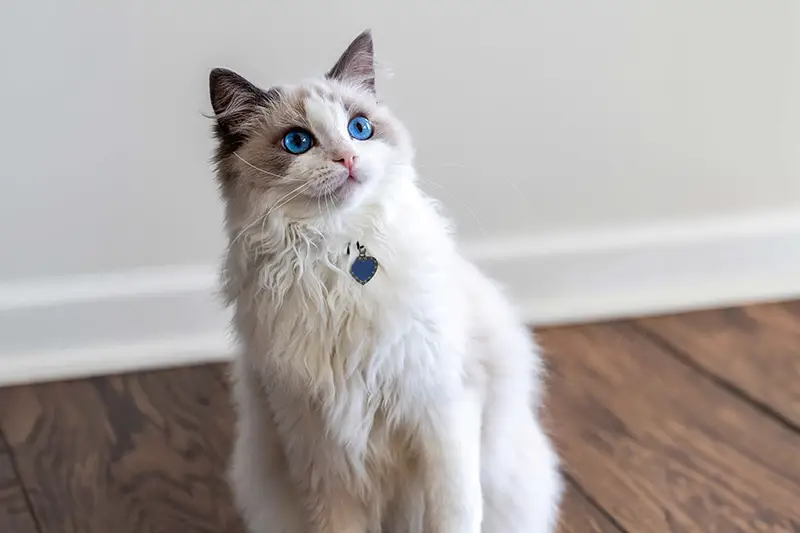
Russian Blue Cat
The Russian Blue Cat remains cautious with unfamiliar people but gets along well with children and other pets. Russian Blue Cats are elegant, exuding a noble demeanor, and they carefully investigate before taking action. They observe people, assessing whether they are worthy of their companionship. Sometimes, people may perceive their behavior as aloof or shy. They are intelligent, with strong learning abilities. They are very quiet and adapt well to solitude. They shed very little.
- Requires minimal grooming
- Silent type
- Quiet
- Enjoys solitude
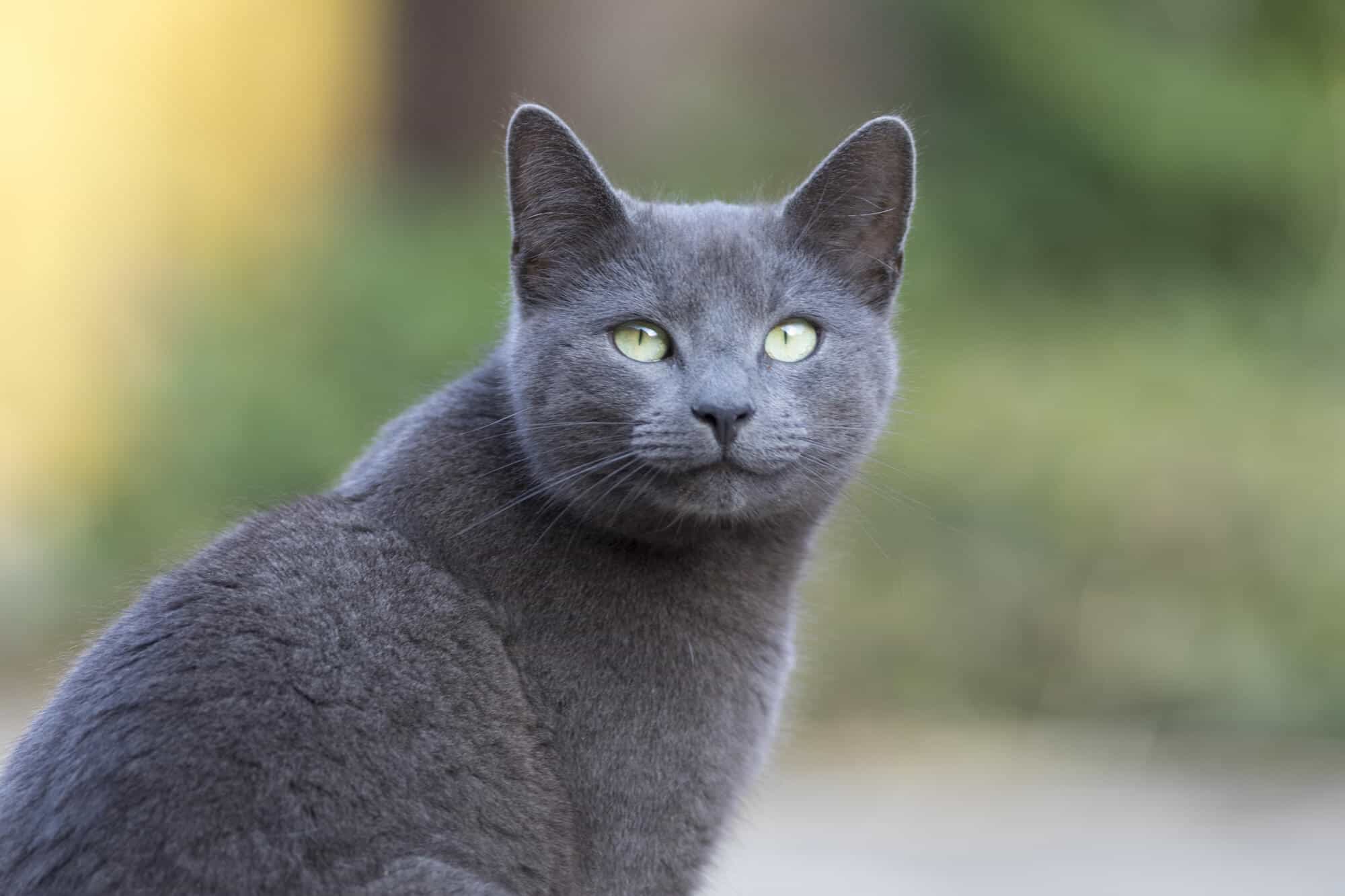
Scottish Fold Cat
The Scottish Fold Cat is intelligent, curious, and loyal to the family. They are bold and enjoy following people around. Many Scottish Fold Cats stand up like groundhogs to observe their surroundings. They get along well with children.
- Requires grooming 2-3 times a week
- Silent type
- Quiet
- Enjoys solitude
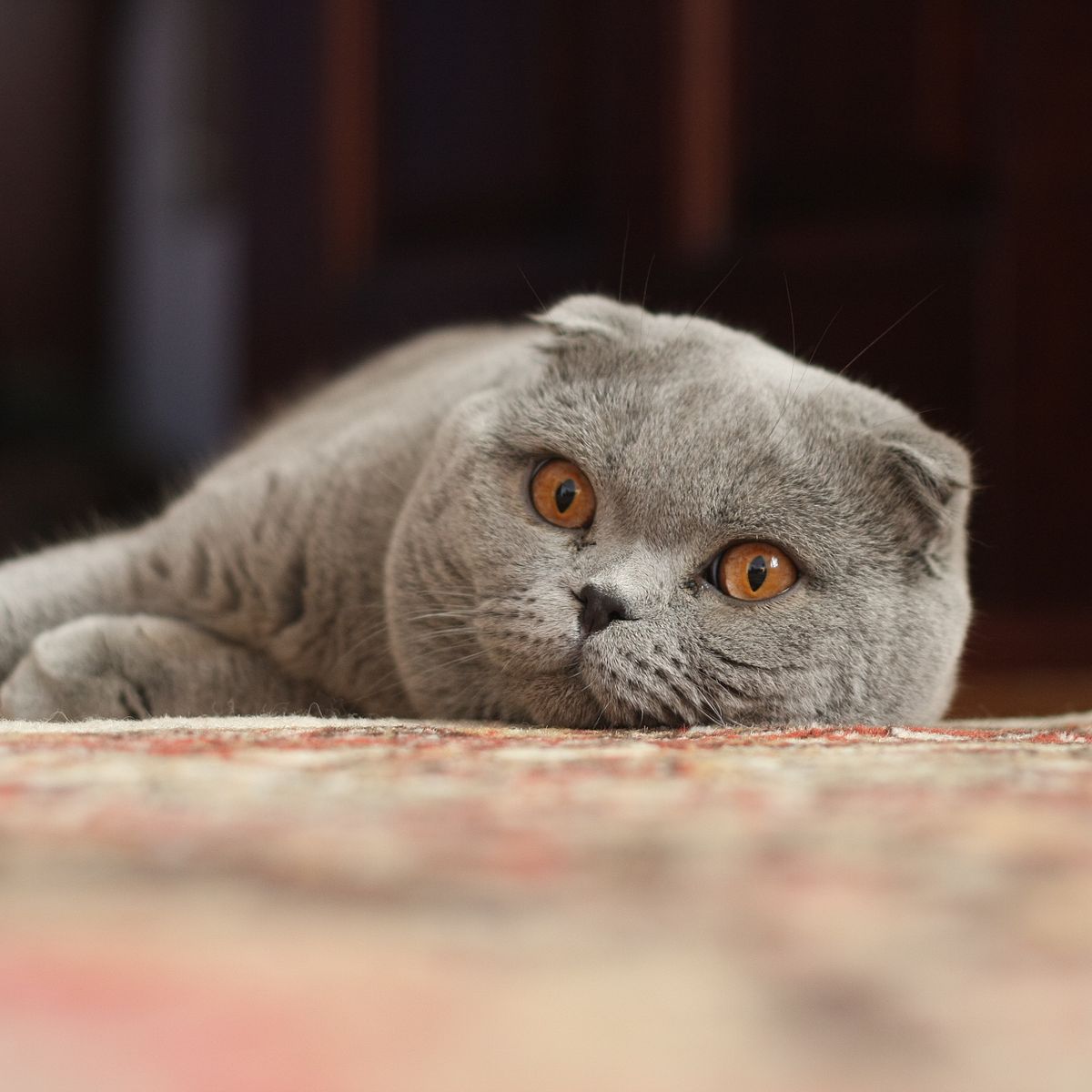
Selkirk Rex Cat
The Selkirk Rex Cat is affectionate, patient, good-natured, and quiet. Their British Shorthair ancestors contribute to their laid-back personality, while their Persian ancestors add adorable traits, and their Exotic Shorthair ancestors bring in some playful tendencies.
- Requires grooming 2-3 times a week
- Silent type
- Quiet
- Enjoys solitude
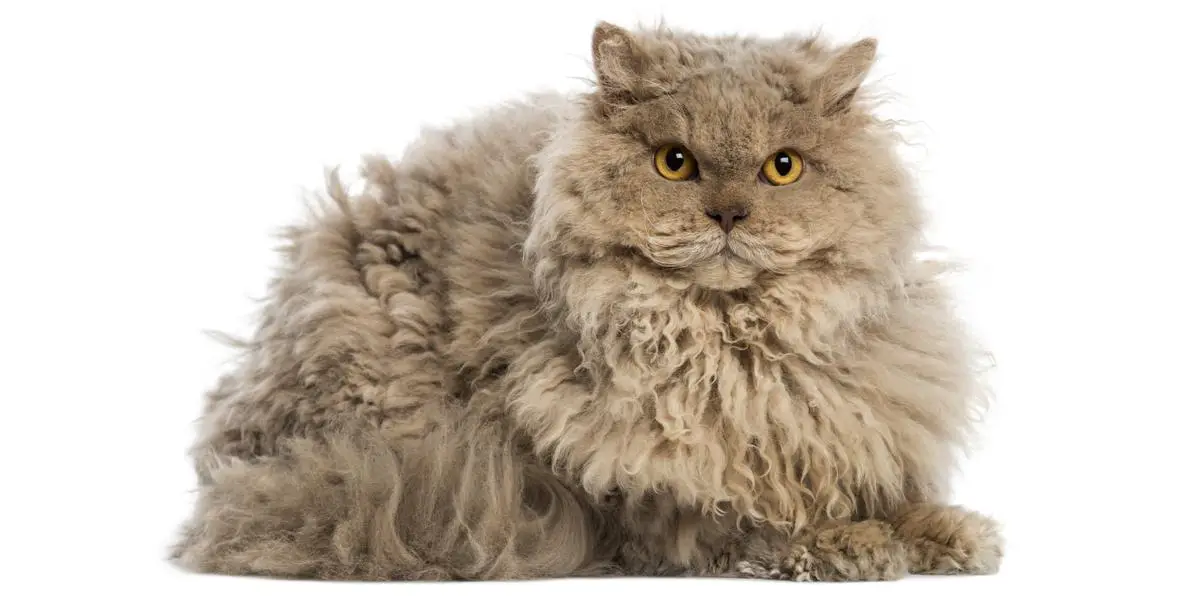
Siamese Cat
The Siamese Cat is an excellent pet for owners who require a lot of interaction and activity. They get along well with other pets and children. They are affectionate, loyal, and people-oriented, craving human attention. Siamese Cats enjoy playing and are quite vocal.
- Requires minimal grooming
- Vocal
- Enjoys social interactions
- Playful and lively
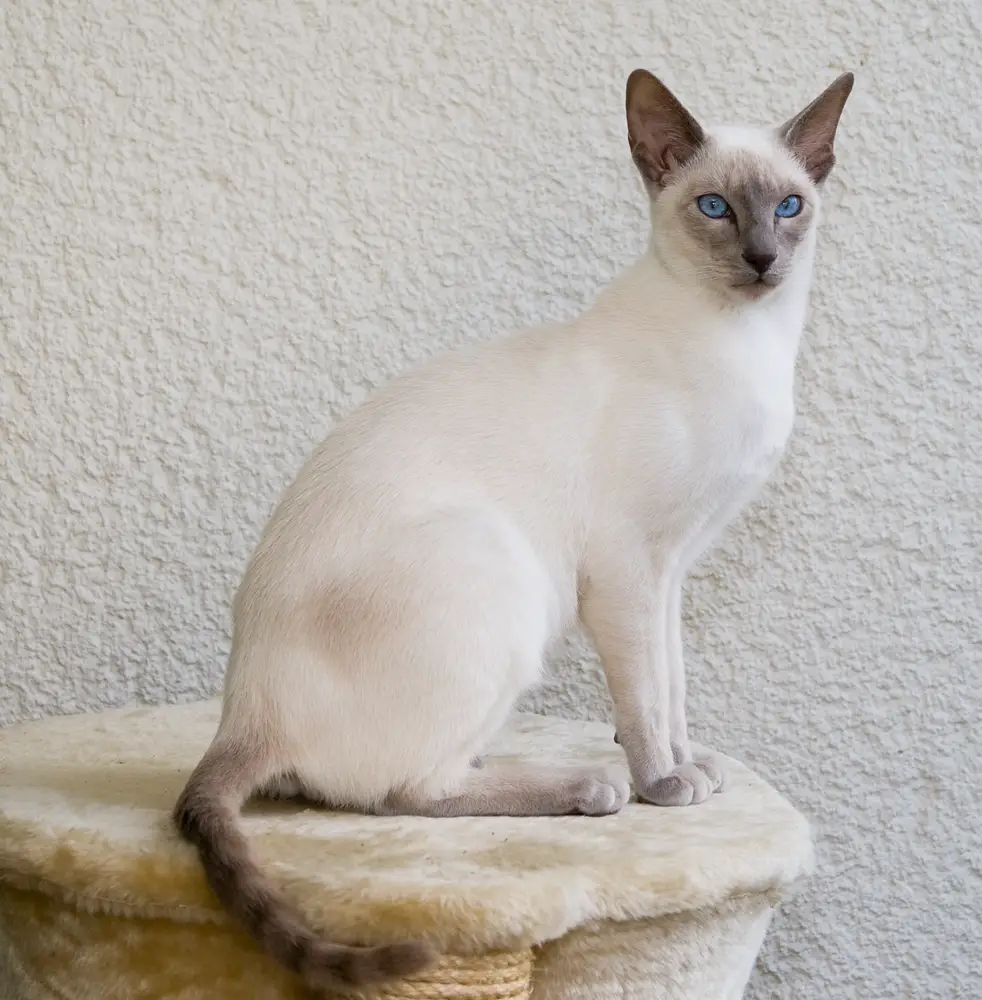
Siberian Cat
The Siberian Cat utilizes its high intelligence to solve various problems, such as opening doors, accessing cat food, and finding hidden toys. They are strong and agile, capable of jumping high and far, and adept at navigating obstacles. Siberian Cats love to play.
Their fur is thick, waterproof, and they enjoy venturing outdoors.
- Requires grooming 2-3 times a week
- Playful and lively
- Enjoys solitude

Somali Cat
Similar to the Abyssinian Cat.
- Requires grooming 2-3 times a week
- Quiet
- Enjoys social interactions
- Playful and lively
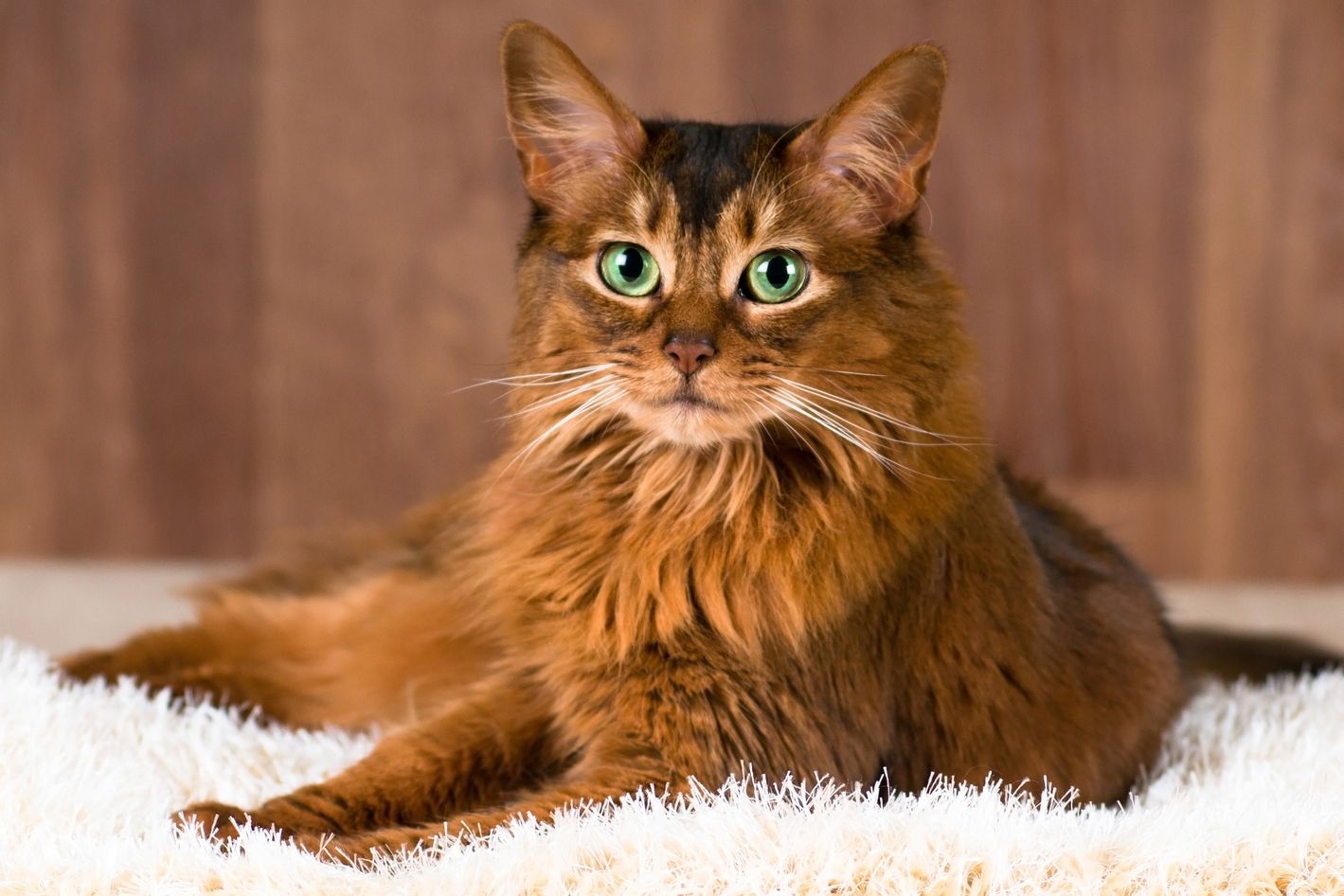
Singapura Cat
The sweet and petite Singapura Cat is curious and outgoing. They are intelligent, enjoying perching in elevated places to oversee all activities. They are gentle, with a soft voice, and can coexist peacefully with other cats.
Singapura Cats have a small stature, with a weight generally not exceeding 3 kilograms.
- Requires minimal grooming
- Quiet
- Enjoys solitude
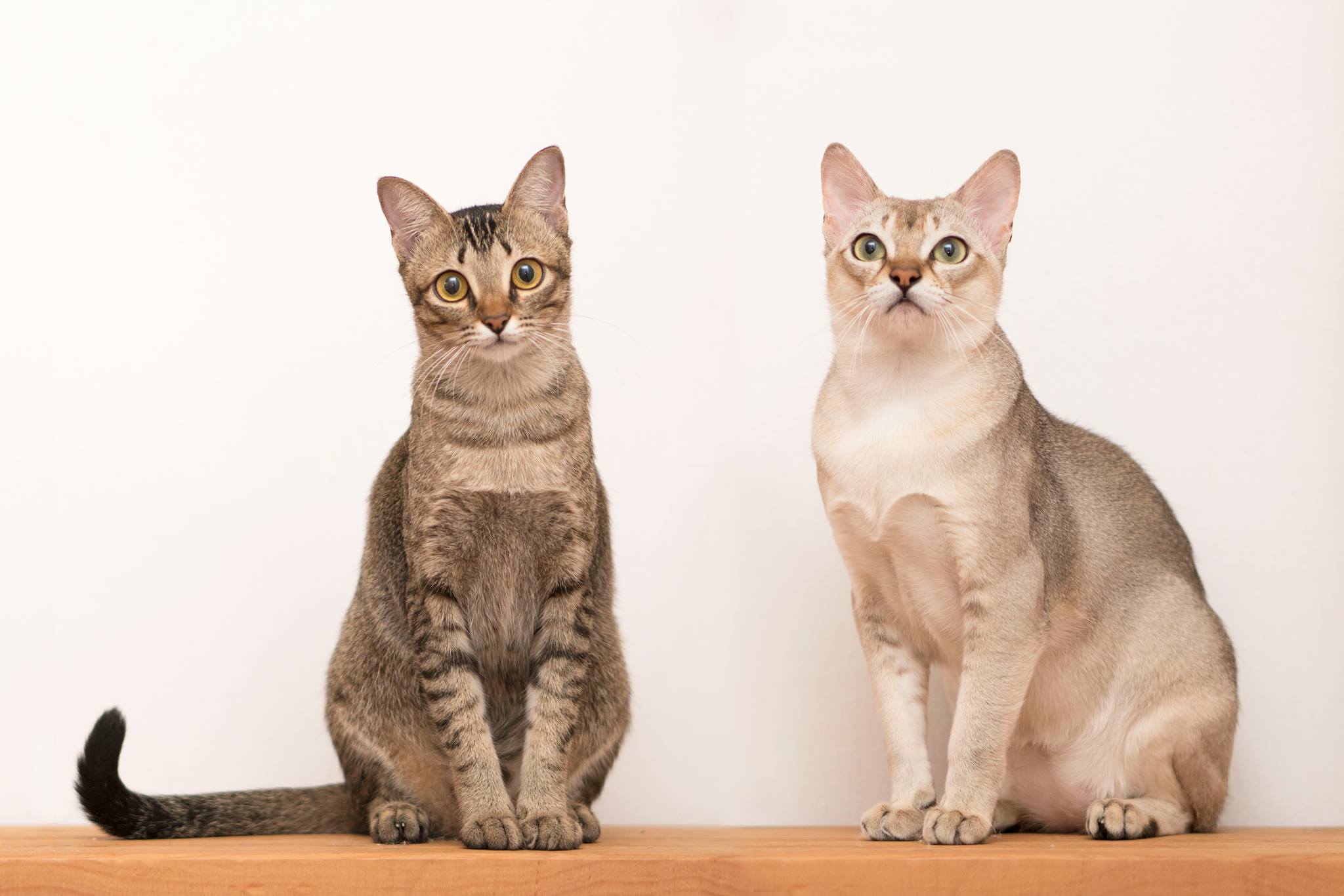
Sphynx Cat
The Sphynx Cat is intelligent and extremely friendly. They often sleep together with their owners in bed and enjoy being on people’s laps. Due to their lack of fur, Sphynx Cats are prone to getting chilly, so they prefer warm places like near computer monitors, sunny windowsills, or next to the television. They are loyal and very affectionate towards their owners.
- Enjoys social interactions
- Playful and lively

Tonkinese Cat
The Tonkinese Cat is affectionate and friendly, enjoying being on people’s laps. They are intelligent with a good memory, making them responsive to training. They love to play, socialize, have a strong will, and can be vocal.
- Requires minimal grooming
- Loves to vocalize
- Enjoys social interactions
- Playful and lively
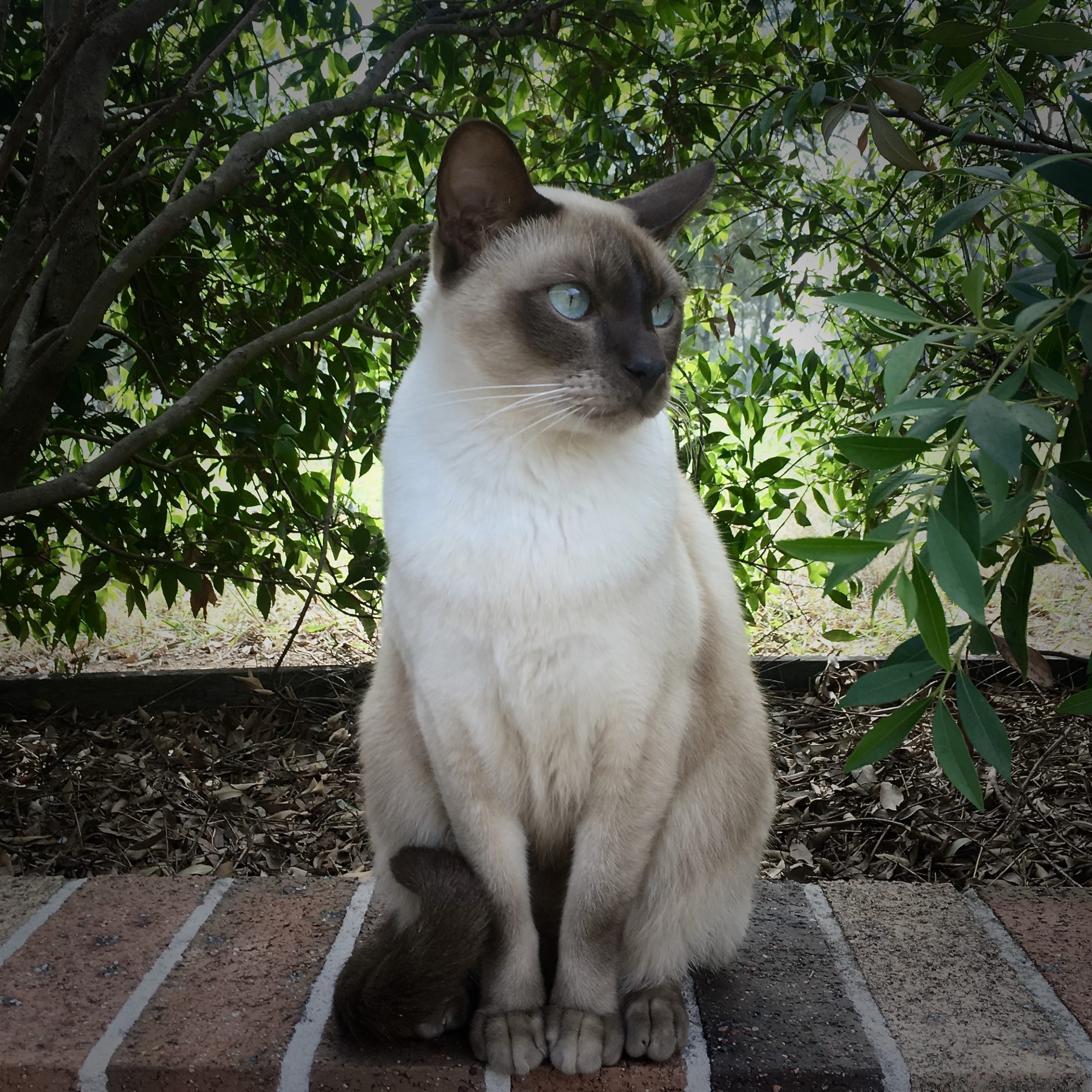
Turkish Angora Cat
The Turkish Angora Cat may appear slender and elegant, but they possess strong muscles and excellent agility. They are highly intelligent, capable of learning to open cabinets and doors.
The Turkish Angora Cat is one of the oldest long-haired cat breeds in the world.
- Requires grooming 2-3 times a week
- Loves to vocalize
- Enjoys social interactions
- Playful and lively
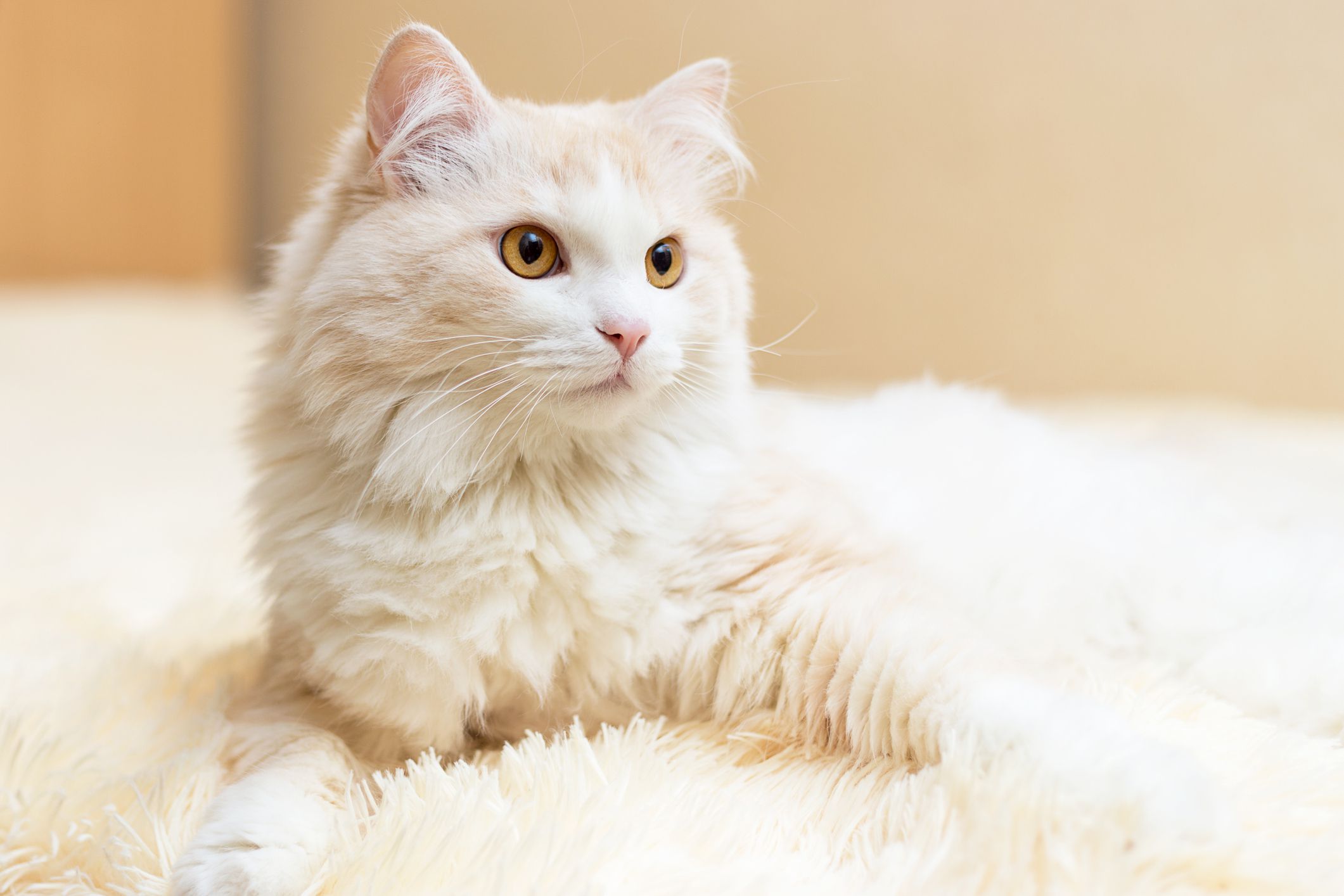
Turkish Van Cat
The Turkish Van Cat is loyal, affectionate, intelligent, and lively. With robust hind legs, they excel as great jumpers and climbers. They love to play and run around, preferring not to be held or lounged for extended periods.
Turkish Van Cats have a unique affinity for water, using their paws to grab at objects swimming in water. This behavior is connected to their ancestors growing up around the Turkish Van Lake area.
- Requires grooming 2-3 times a week
- Not particularly vocal
- Playful and lively
